CURRAHEE WILDFLOWERS, PART 2
6/21/20
I returned to Currahee Mountain yesterday to figure out yellow flowers. I also found a few new ones.
Many of the flowers from two weeks ago were no longer blooming. For example, I don’t recall seeing Indian Pink, Sweet Shrub, Carolina Rose, Pale Purple Coneflower, Virgnia Goat’s Rue, Southern Sundrops, Yellow Star-Grass, Pencil Flower, Highbush Blackberry, or Basil Bee-Balm. Although I didn’t photograph most of them, I did see many from two weeks ago, including Trumpet Creeper, Butterfly Weed, Tall Thistle, Northern Leatherflower, Meadow Phlox, Sensitive Brier, Smooth Spiderwort, Hairy Cat’s-Ear, Queen Anne’s Lace, Common Morning Glory, Rough Daisy Fleabane, Wild Quinine, Ox-Eye Daisy, and Carolina Horse-Nettle.
While sitting on the rocks at the top, I also watched at least three Six-lined Racerunners (Aspidoscelis sexlineatus). These are small and fast ground lizards, with brown to black bodies, six yellow stripes that run down their sides, and strikingly blue bellies and chins. Lots of Turkey Vultures (Cathartes aura) and a few Black Vultures (Coragyps atratus) were taking off from the radio towers at the top.
The Yellow Flowers
Most of my attention on the hike down was on the yellow flowers, especially Coreopsis and Rudbeckia, which I found so difficult to identify two weeks ago. On all of these, it is crucial to look at the leaves and stems, and especially the bracts or sepals on the backs of the flowers.
Black-Eyed Susan (Rudbeckia hirta) have compound flowers with eight or more main rays, and an elevated dark brown central disk. Last week, I noticed that these were sometimes more pinkish than dark brown, but this seems to be caused by the camera: flowerheads that were dark brown to my eye today came out much lighter in the photo. The underside of the flower has numerous hairy sepals, and the stem is also hairy. The leaves are opposite, stemless, and long and narrow. On some plants (bottom photo), the flowers have more rays and the leaves are much shorter and wider; it is possible that this is a different species of Rudbeckia, but I haven’t seen it in the field guides, but BONAP indicates that there are nine species of Rudbeckia in northeast Georgia.

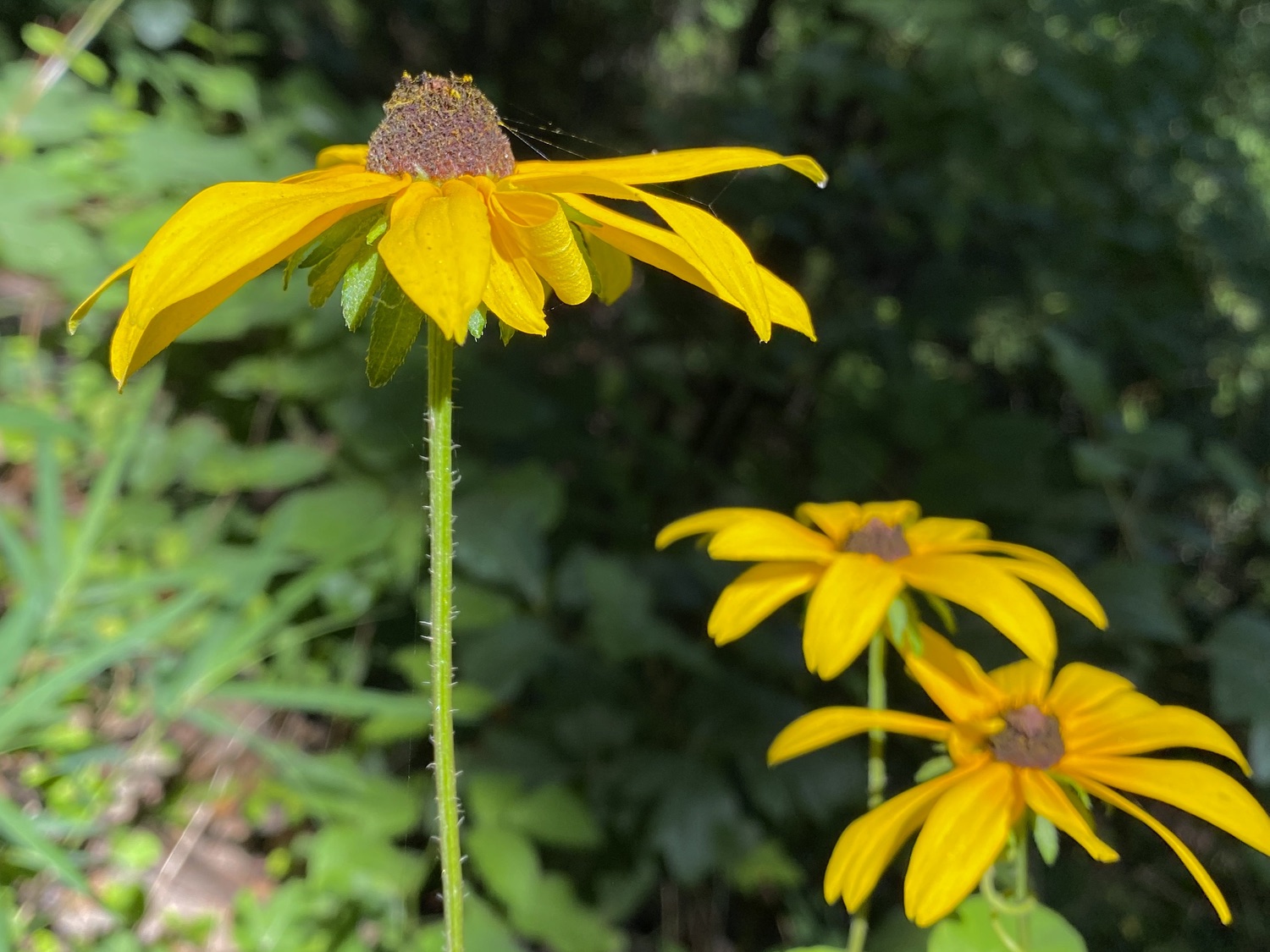
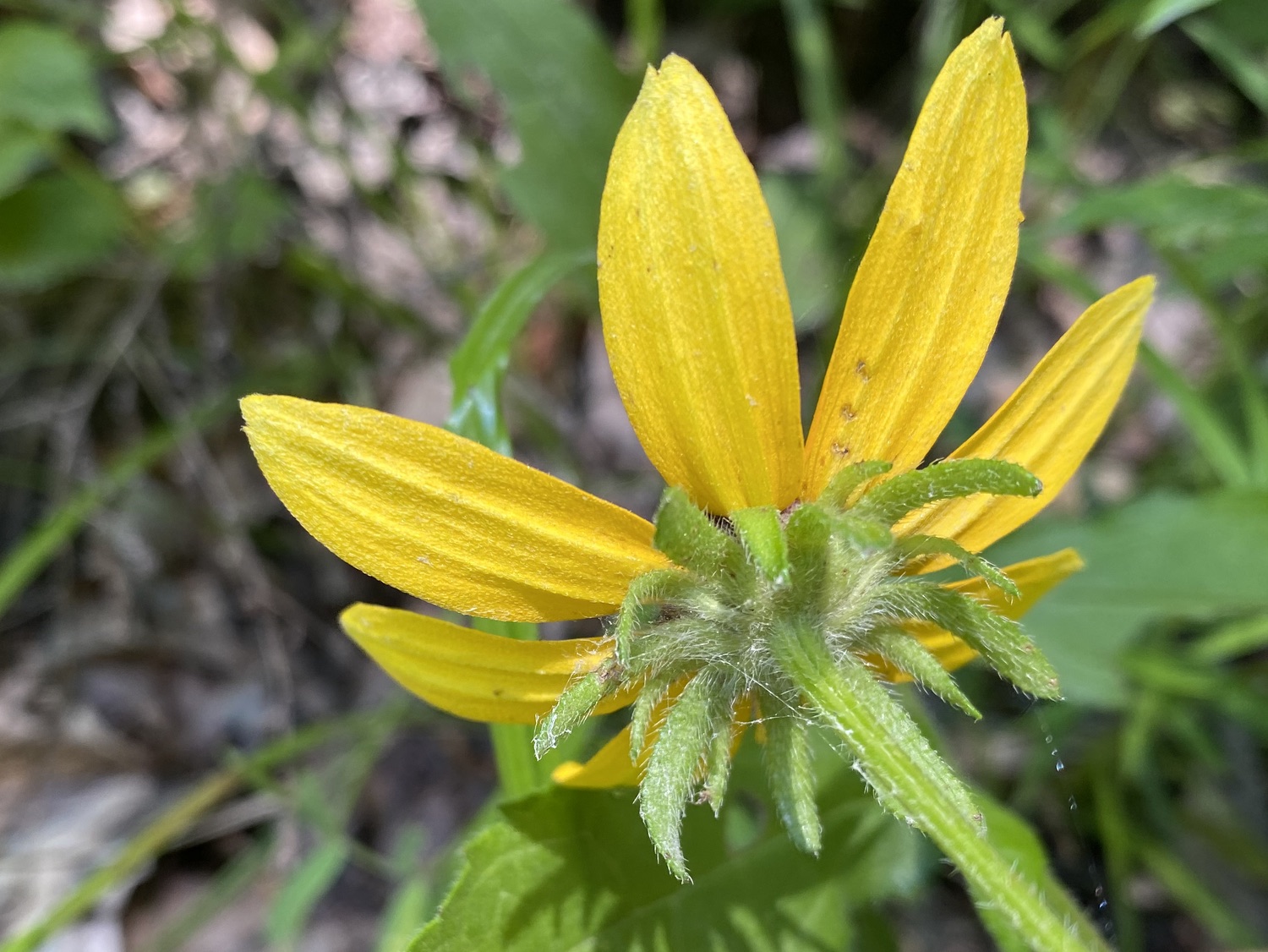
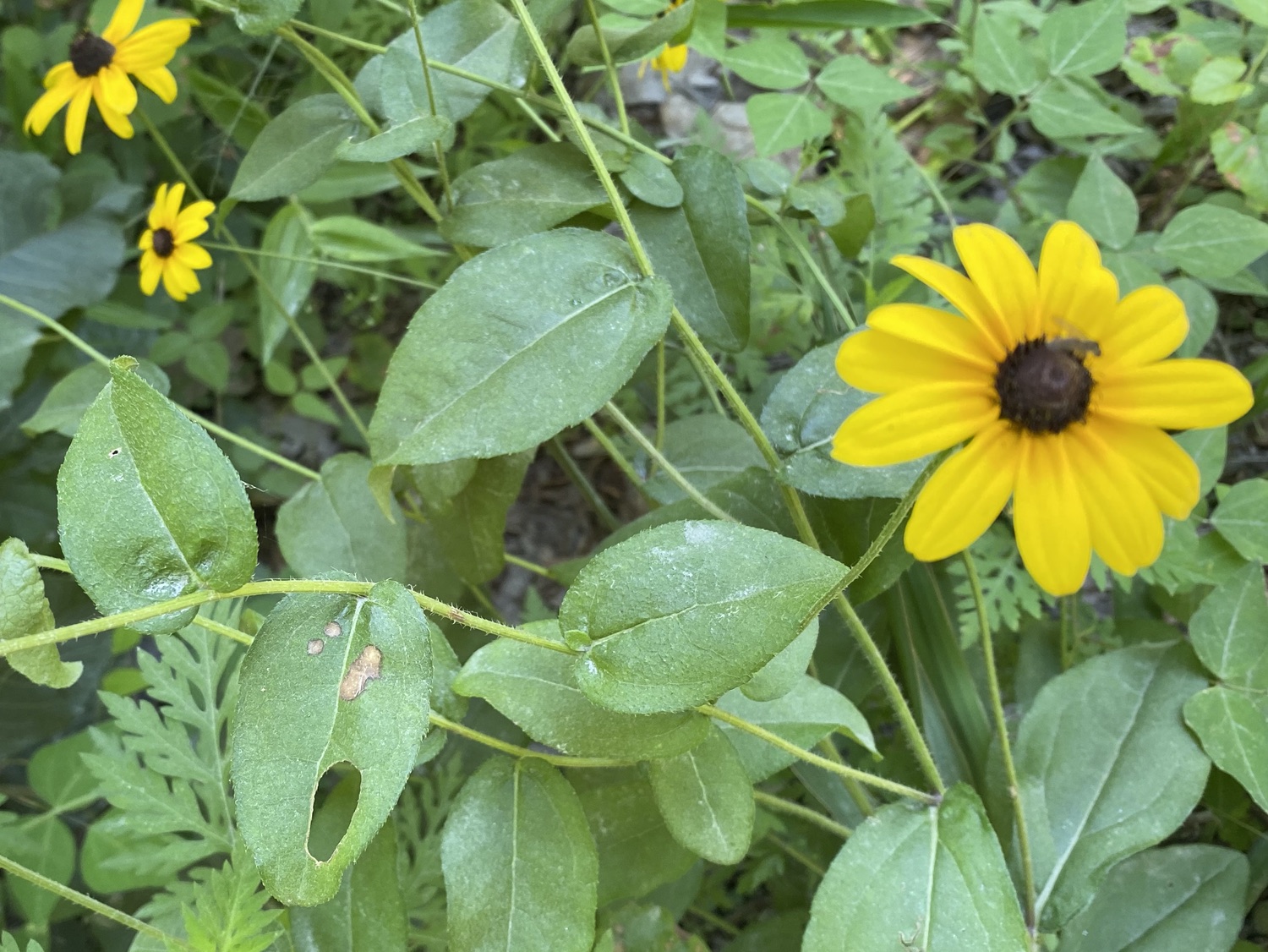
Woodland Coreopsis (Coreopsis major). The flower is compound with eight outer rays and a central disk of tiny yellow to brown flowers. The leaves are distinctive: over most of the plant, they consist of what looks like six wide oblong leaves in a circlet, but these are actually two leaves, each divided into three deep lobes. Near the top of the plant, there may be only one leaf of three, or there may be two simple opposite leaves. The white on the leaves is from the dust of the road.
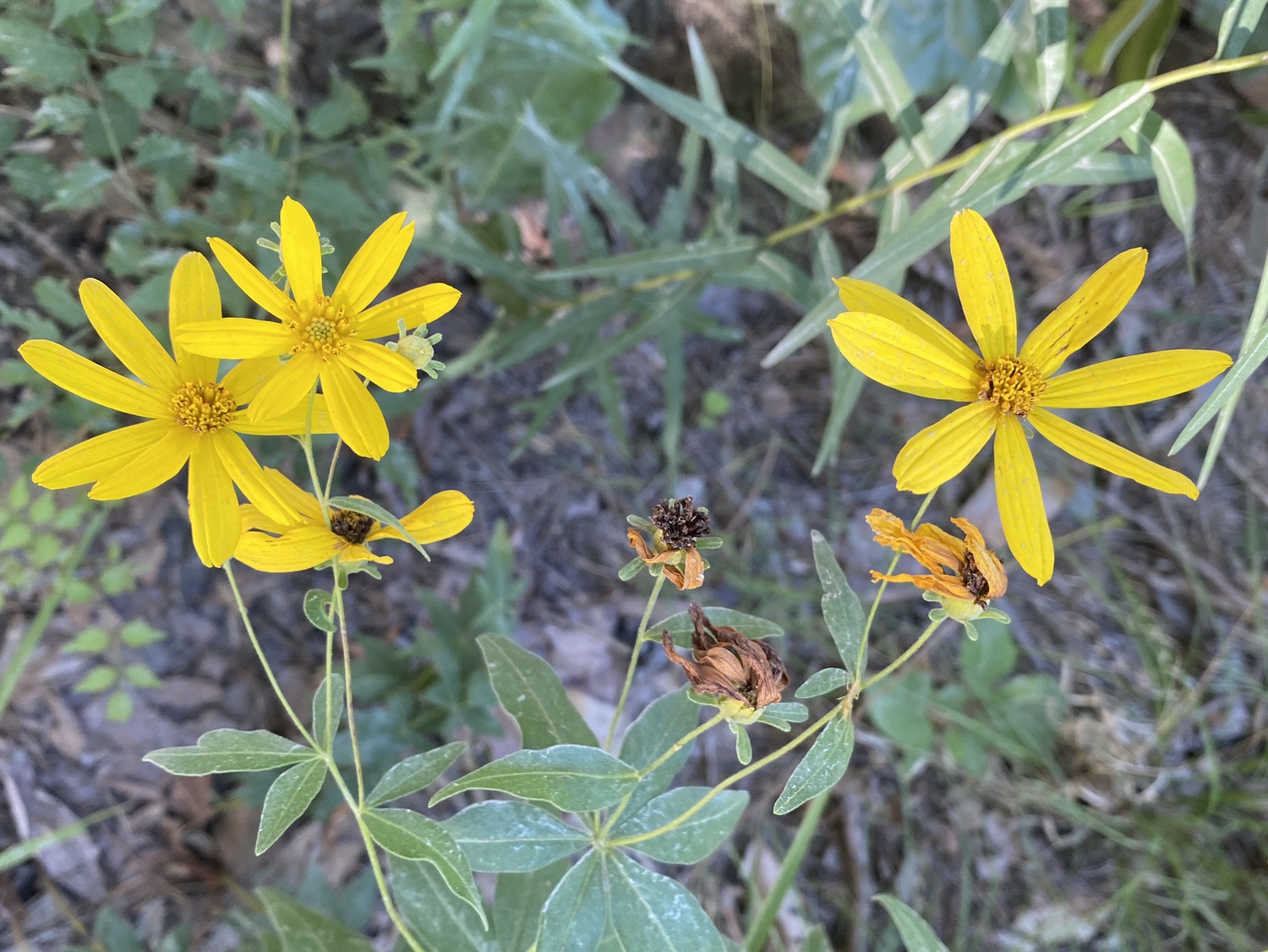
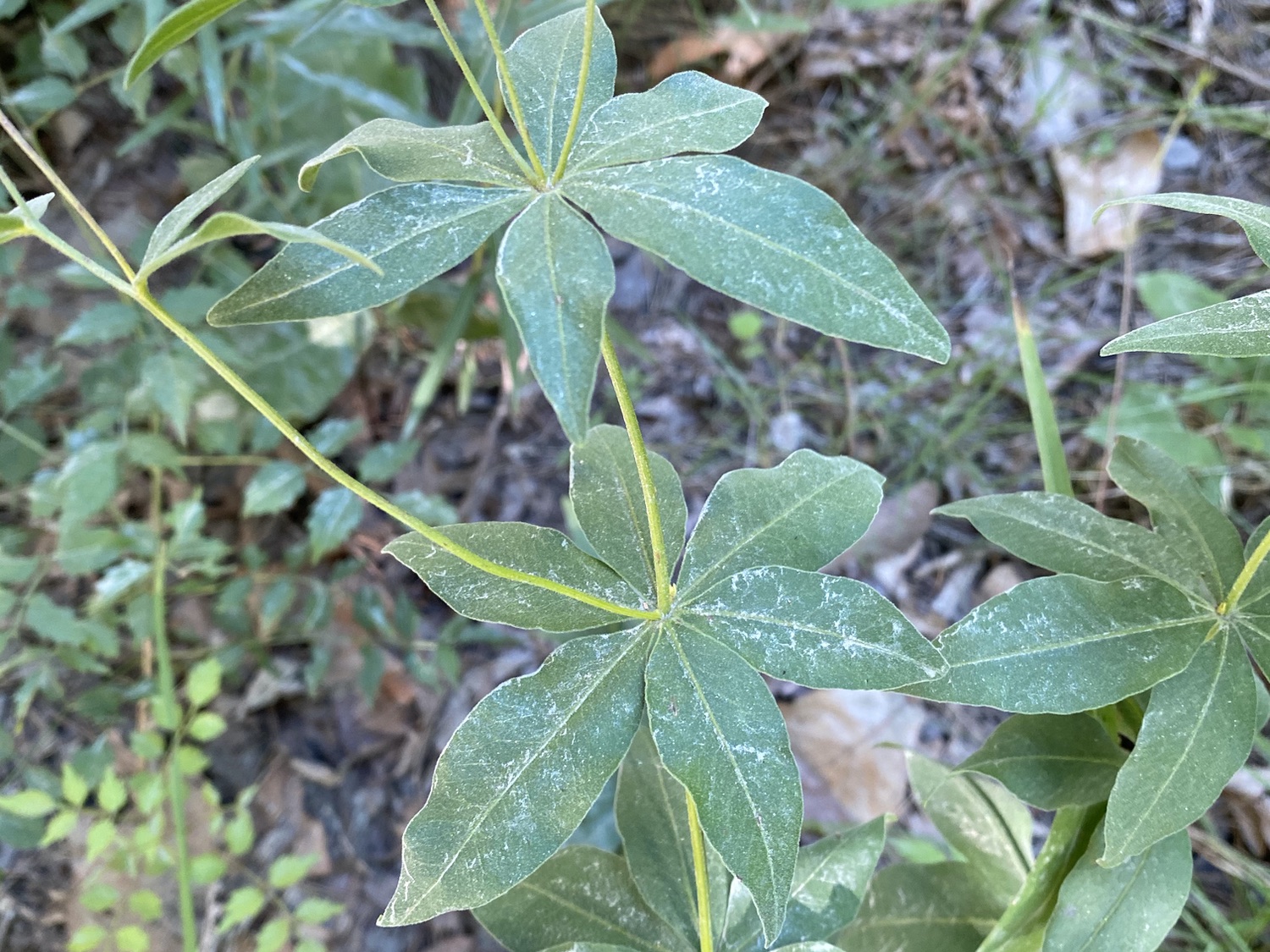
Woodland Coreopsis narrow-leafed variety (Coreopsis major). I had originally thought these were something different, but they are just a variation of the Woodland Coreopsis. I’ll leave them here, because the leaves are distinctly narrower than the ones above. I have not seen any plant show both the narrow and wide leaves.
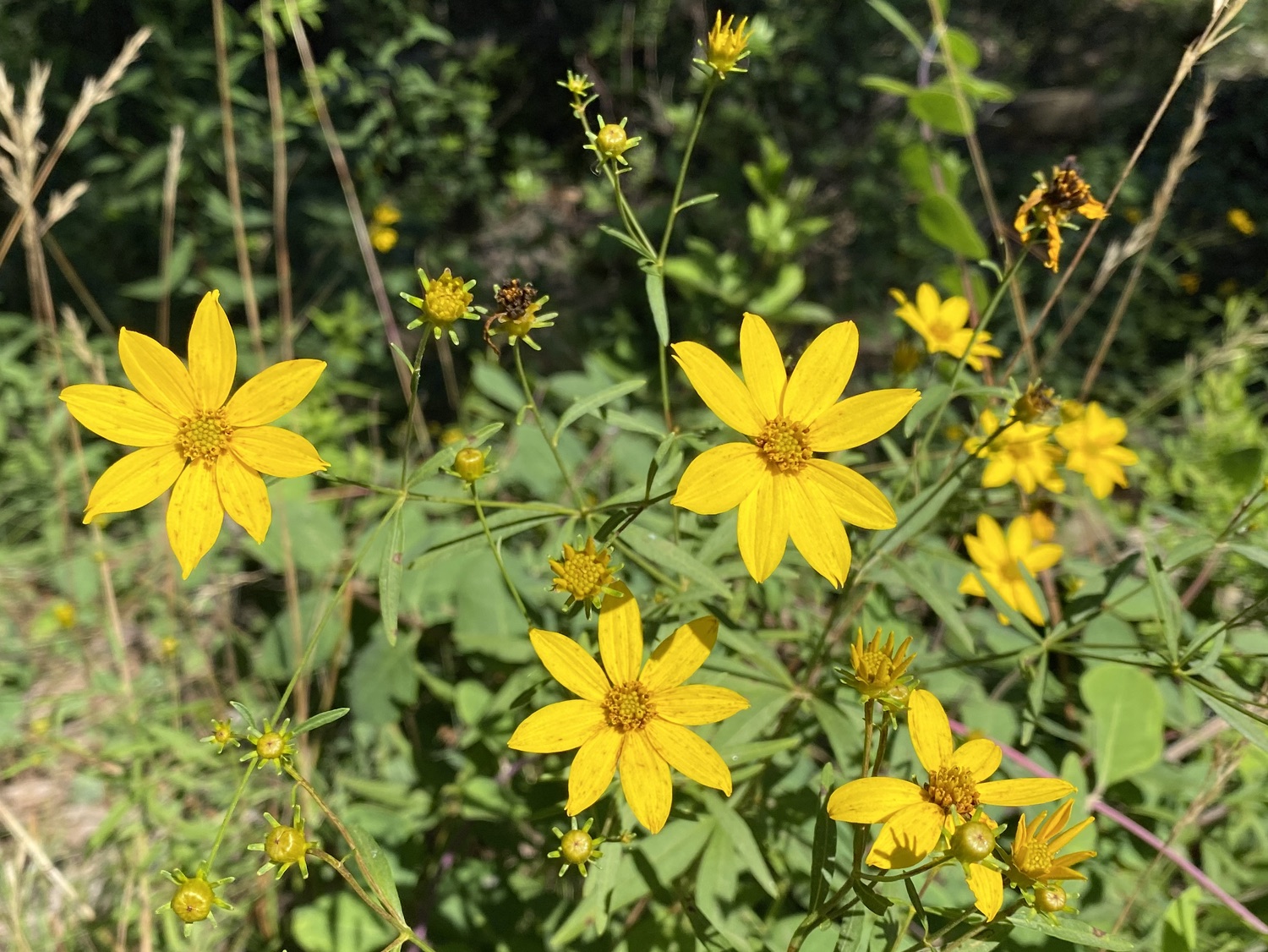
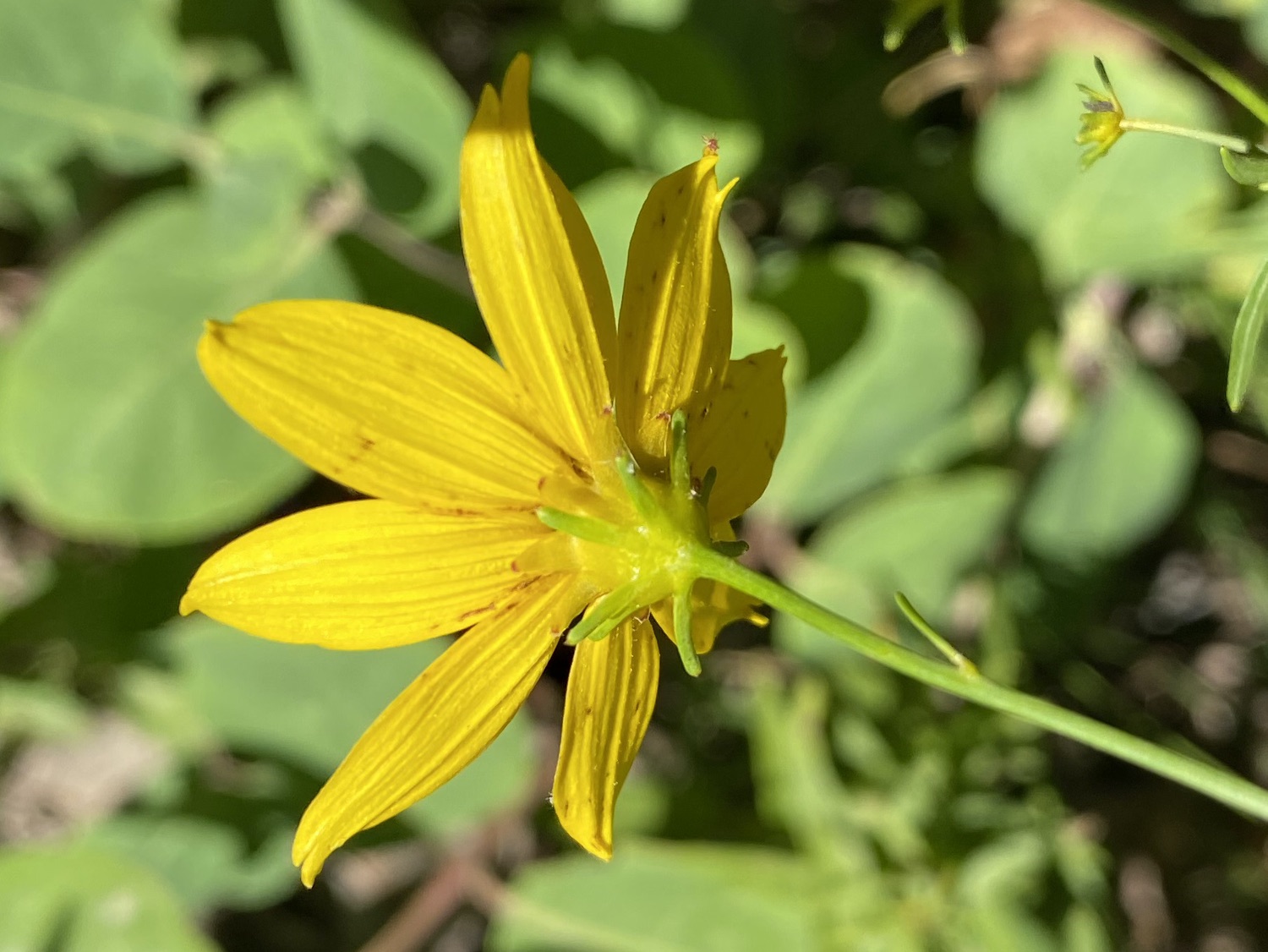
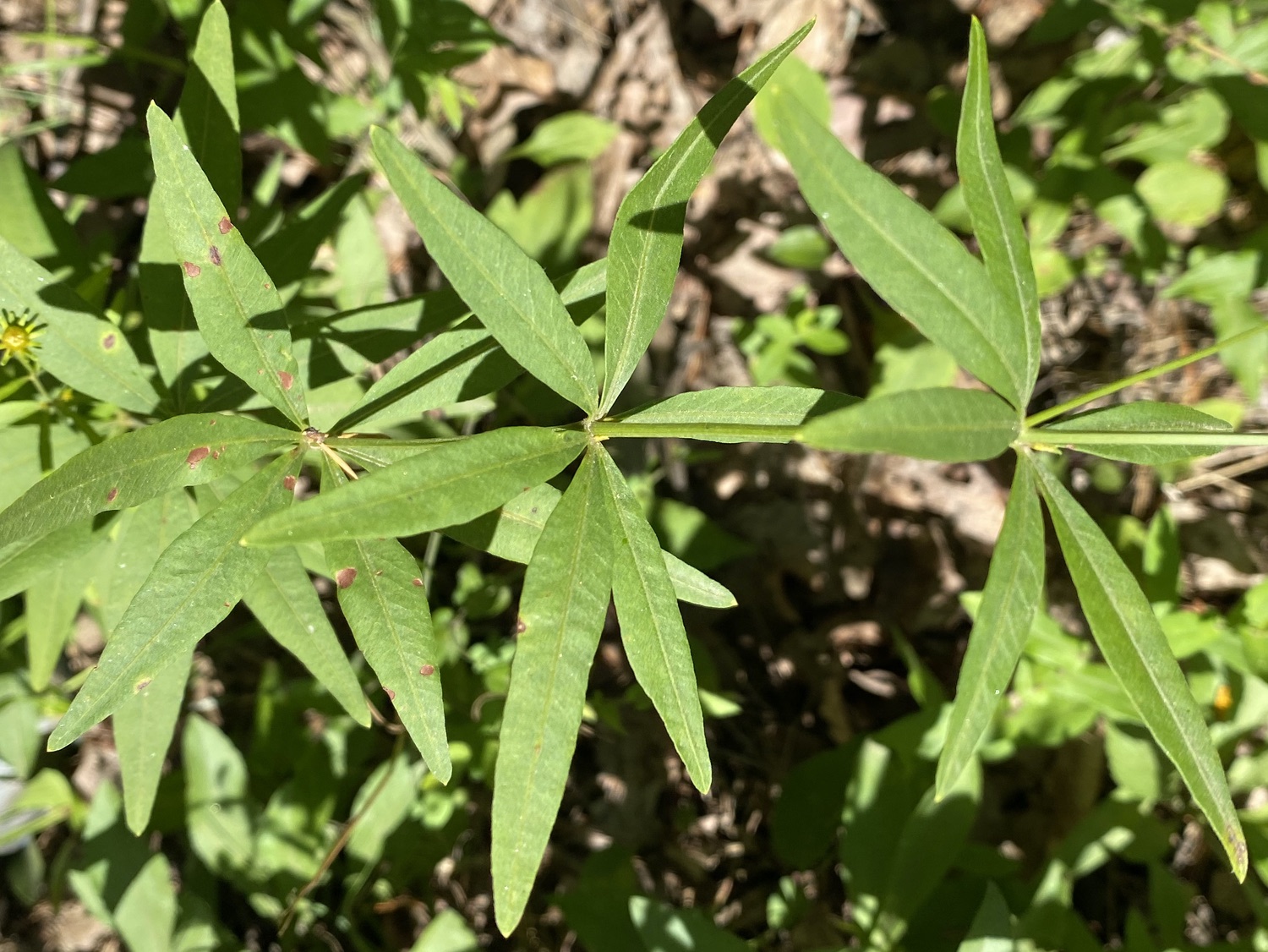
Hairy Sunflower (Helianthus hirsutus). The compound flower looks superficially similar to a Coreopsis, with 8–10 notched rays and a central disk of yellow flowers. Underneath, however, it looks nothing like a Coreopsis, having multiple whorls of pointed bracts. Moreover, the leaves are quite different: they are opposite, unlobed, long, and tapering. The leaves and the reddish stem are also hairy.
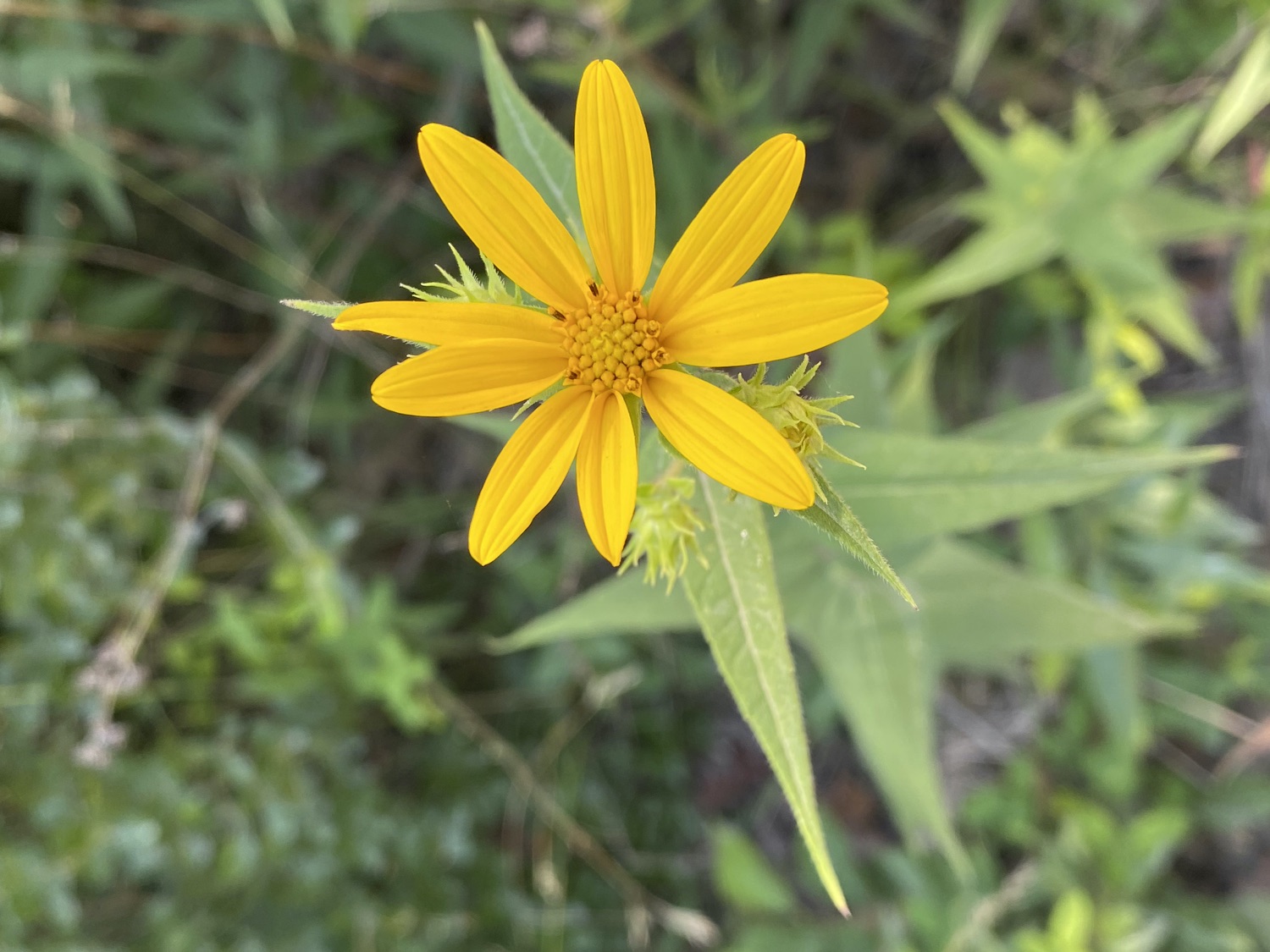
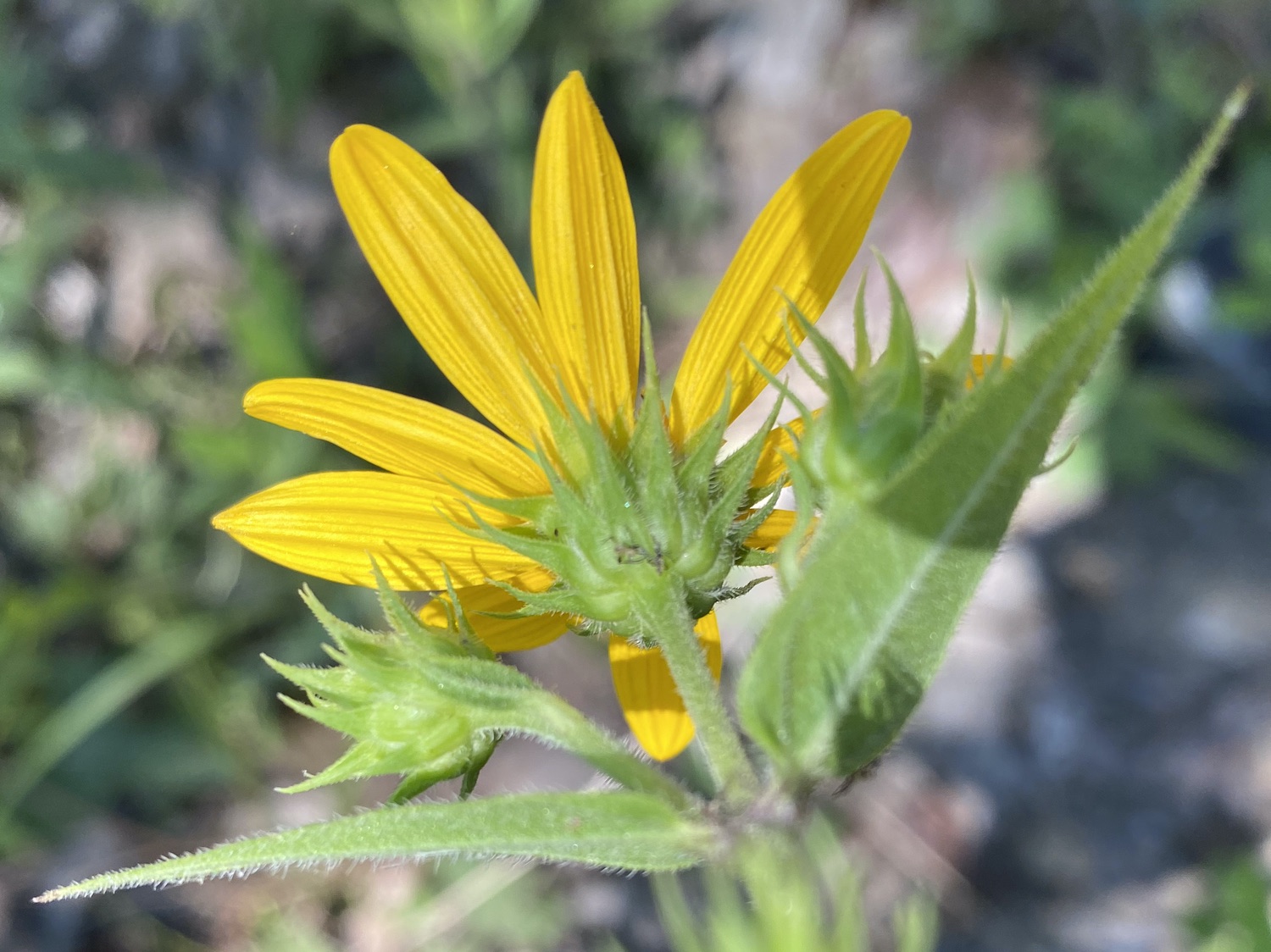
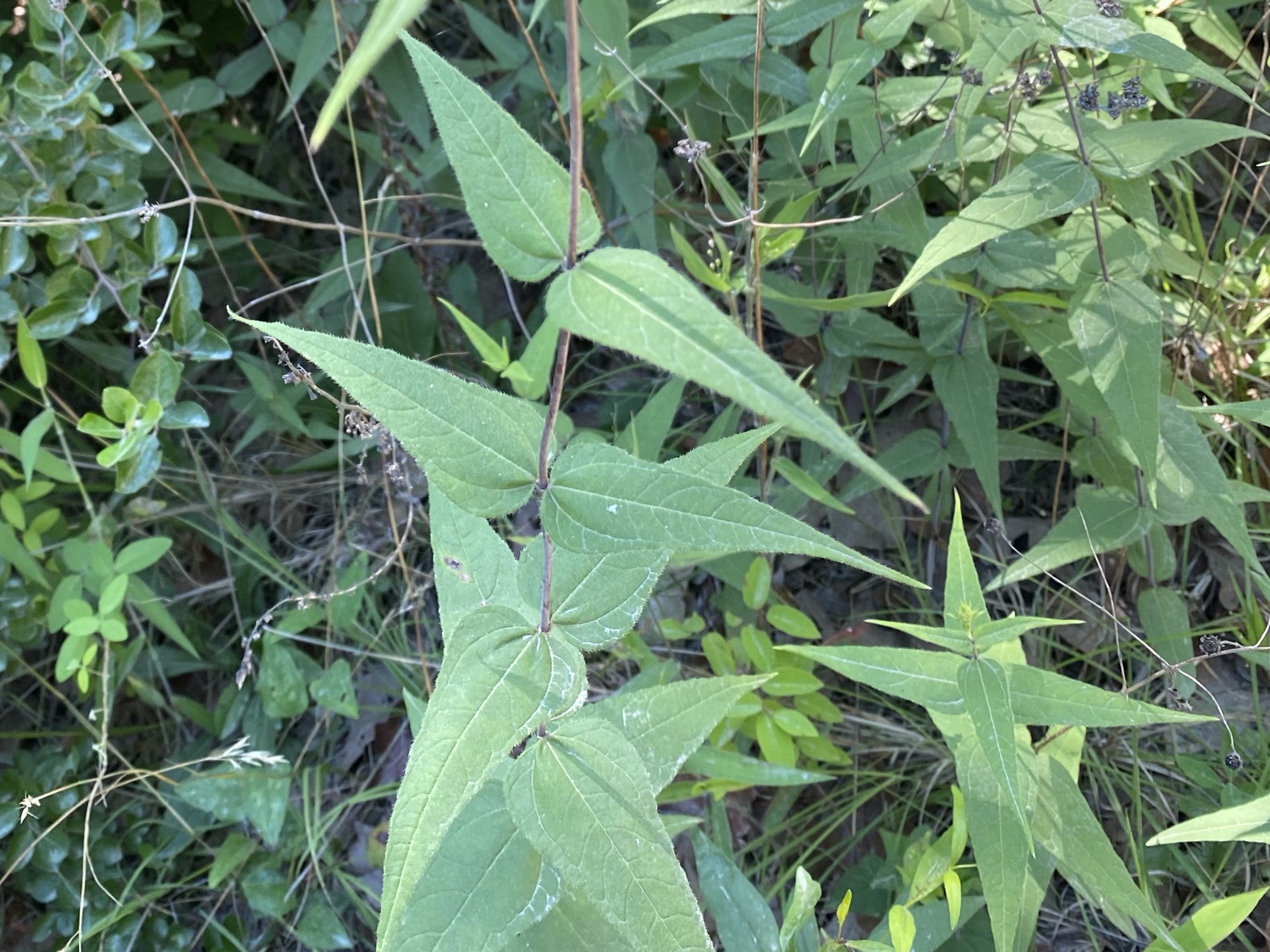
Kidney-Leaf Rosinweed (Silphium compositum). The flowers look similar to a Coreopsis or a Helianthus, but again, the underside pattern of oval bracts is distinct. I found only one of these tall (about 4') plants. The flower is compound, with about 8 main toothed yellow rays. The central disk is mainly yellowish green flowers, with several long yellow-tipped anthers around the edges. The stems are reddish, with a waxy coating, and the leaves along the stem are widely spaced, alternate, simple, and elongate. The leaves near the base are larger and deeply lobed, reminiscent of an oak leaf, with reddish veins. Like many of the others here, these leaves are dusty from the gravel road.
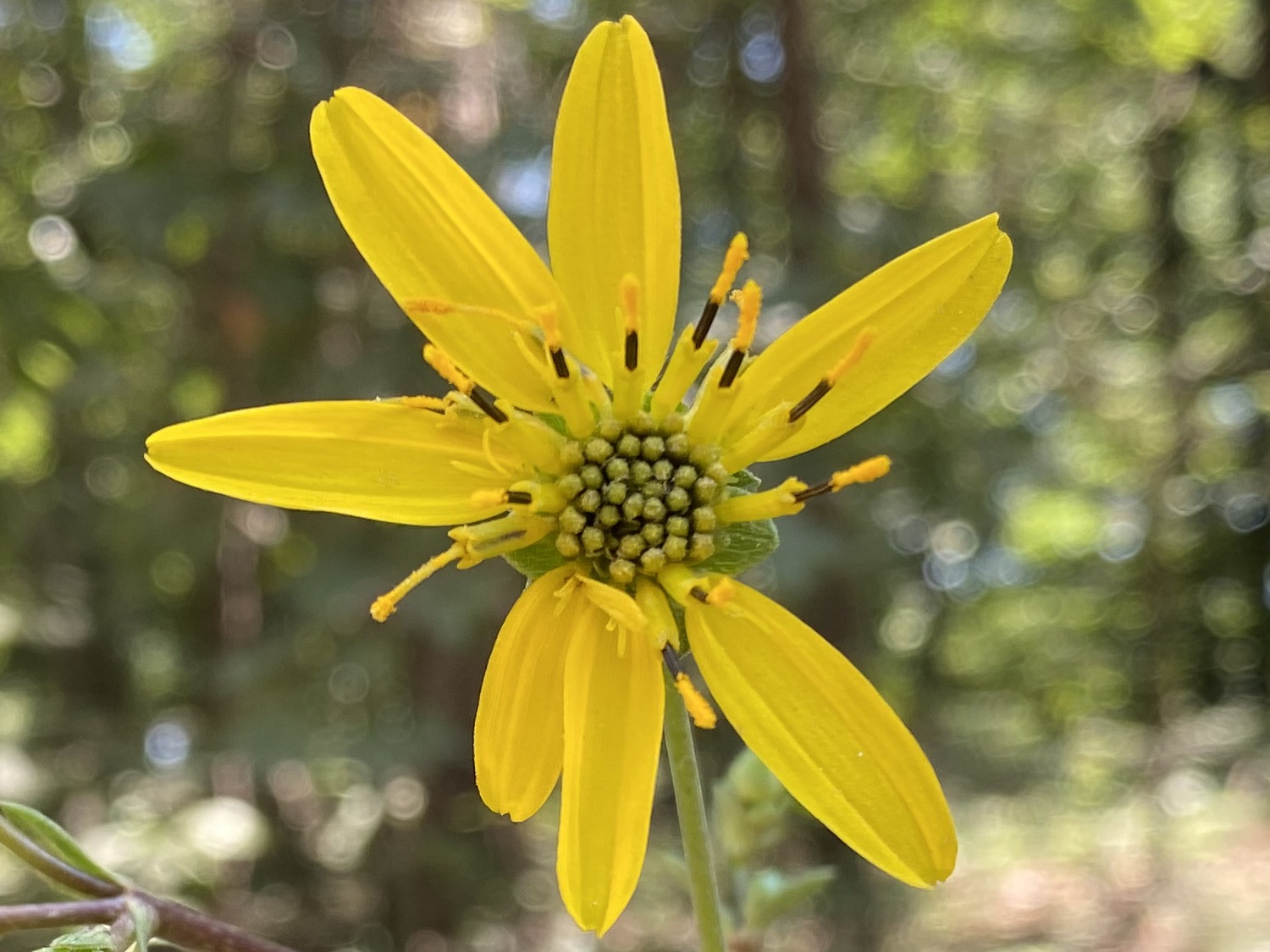
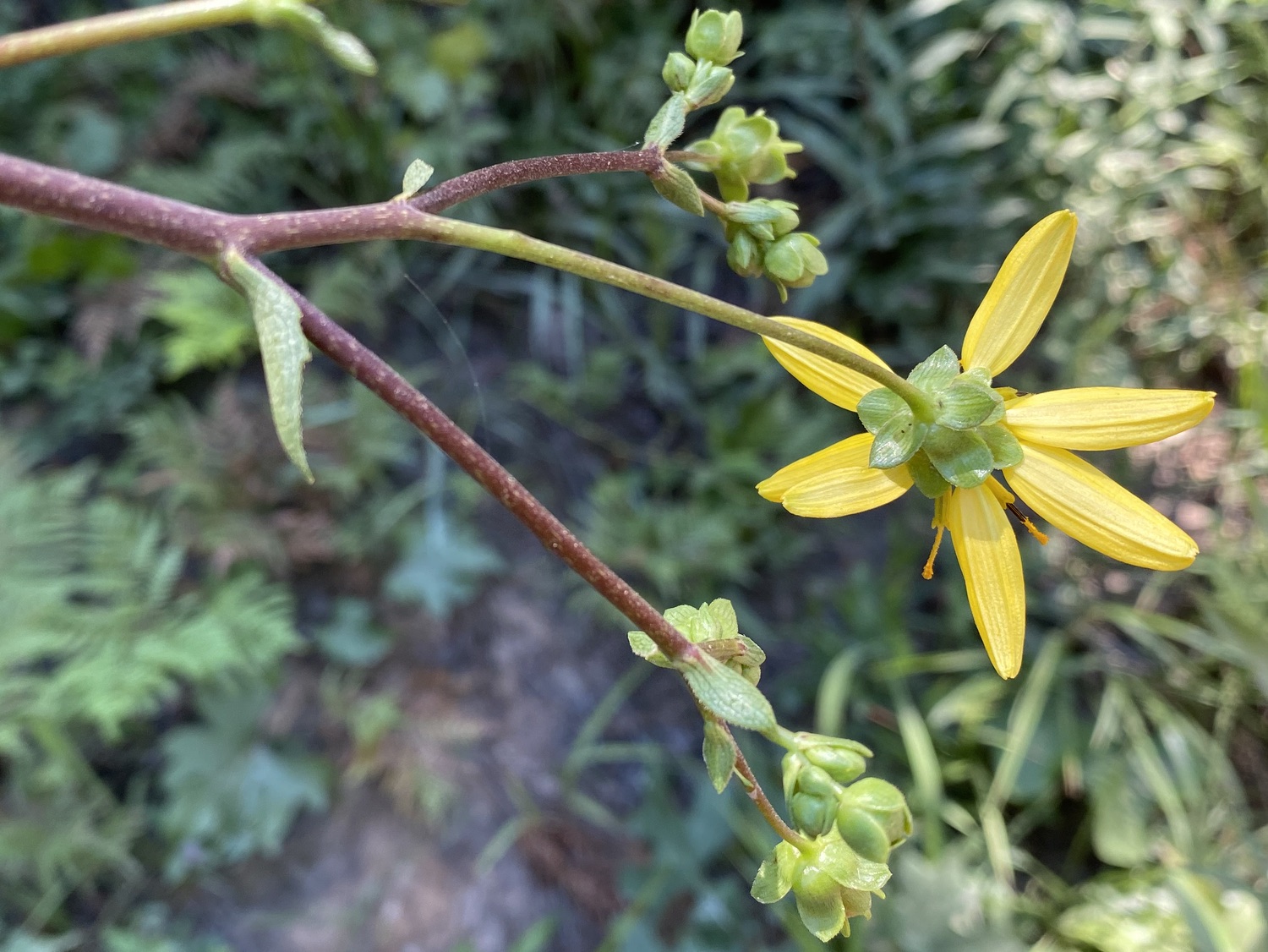
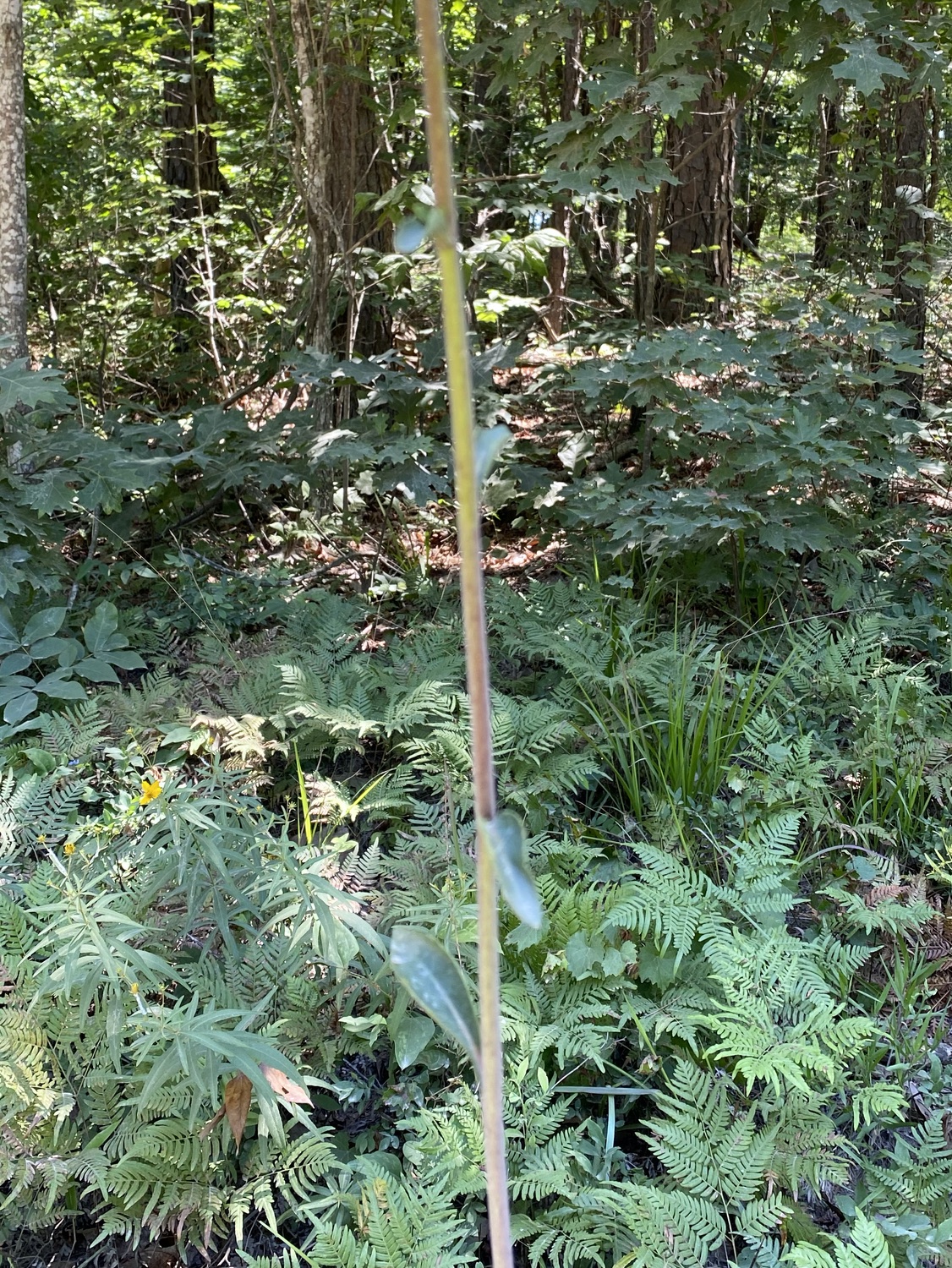
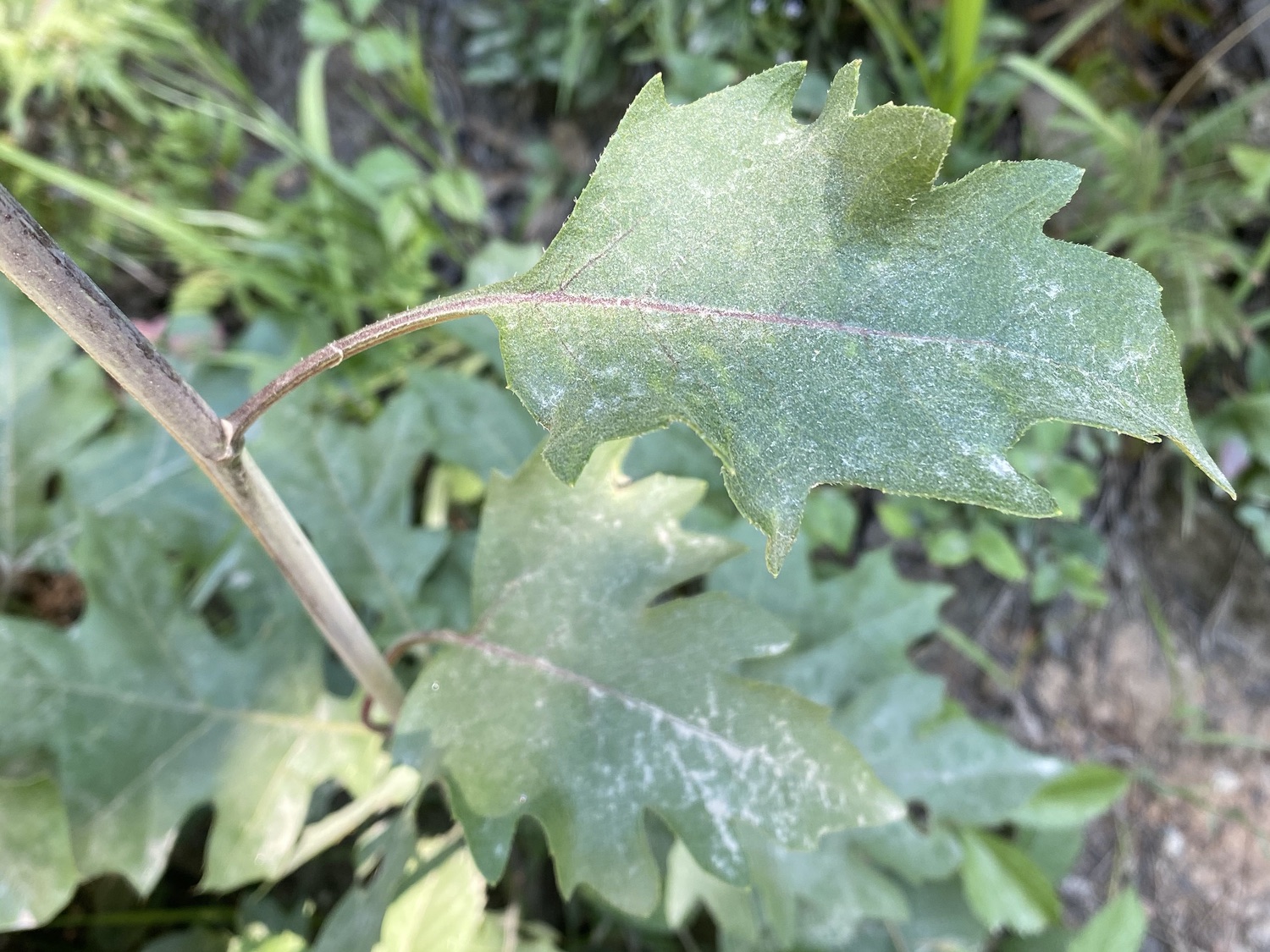
Hairy Hawkweed (Hieracium gronovii, also called Beaked Hawkweed). I found only one of these dandelion mimics. They have compound flowers with multi-toothed ray flowers, but no flowers in a central disk. The stem is round and branching, with few leaves along the stem. Most of the leaves are in a basal rosette; they are unlobed, untoothed, and quite hairy. These leaves lack reddish veins, which distinguishes the Hairy Hawkweed from the Veiny Hawkweed (Hieracium venosum).
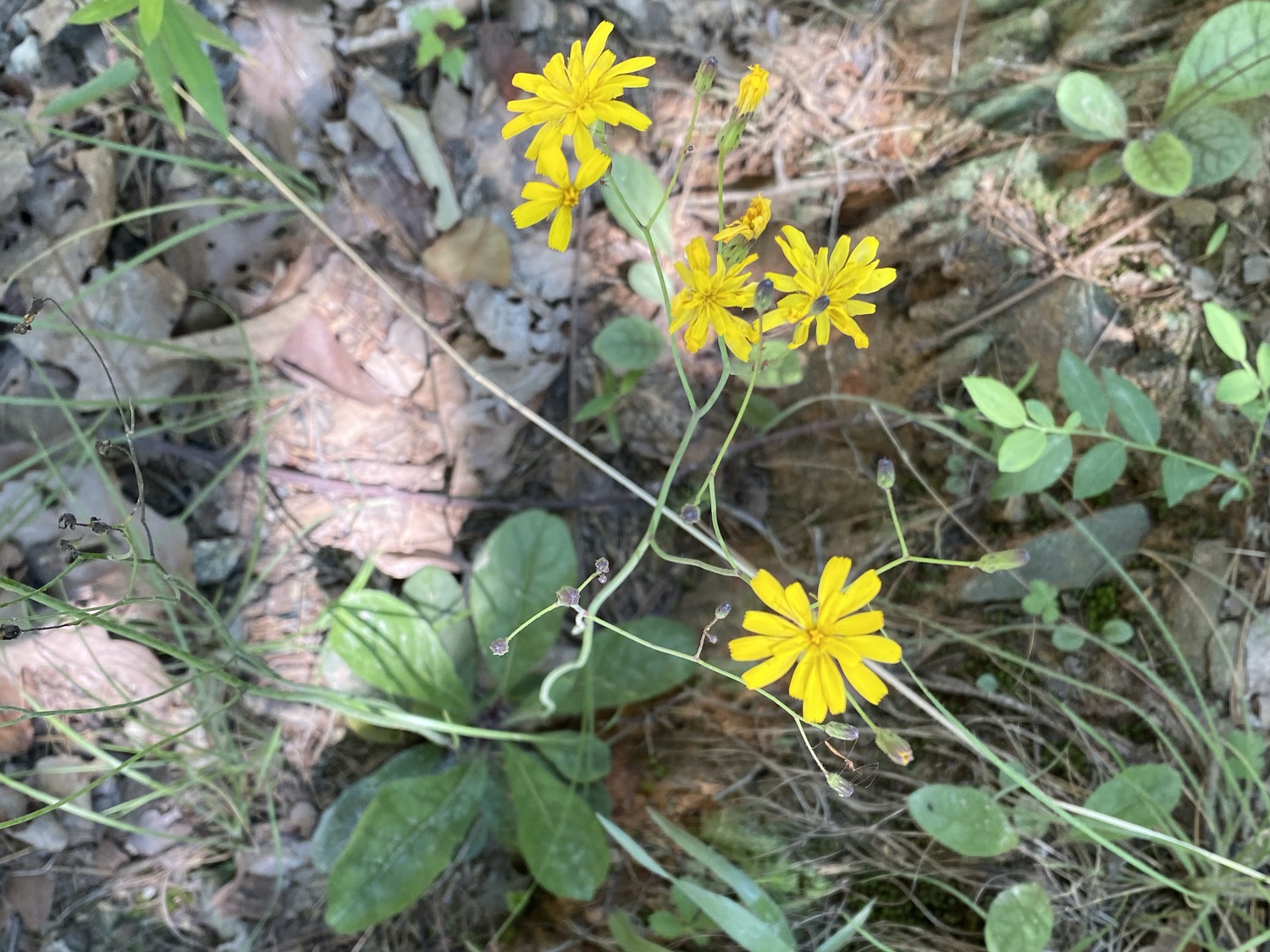
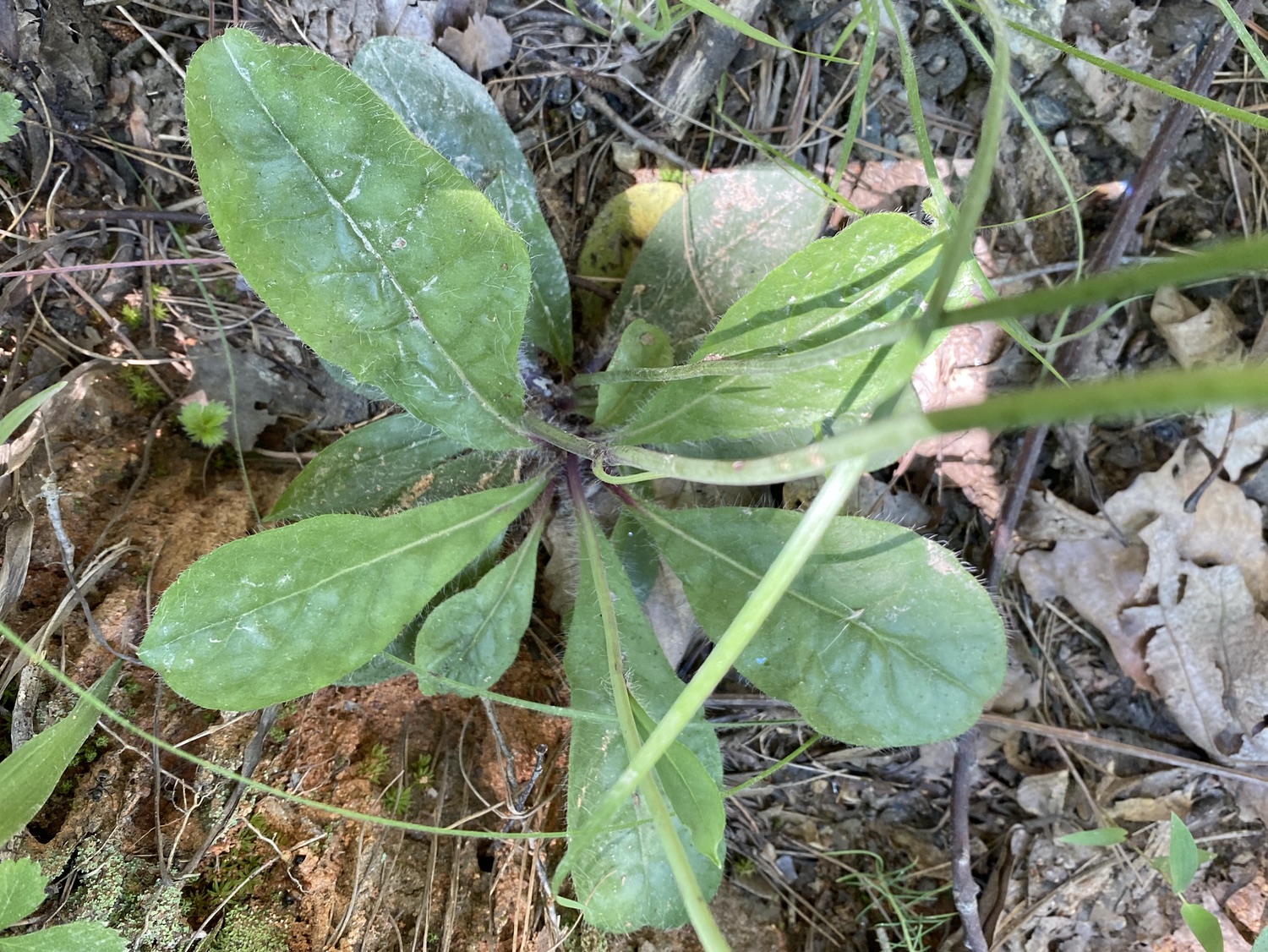
St. John’s Wort (Hypericum perforatum). The flower are simple, with five pointed yellow petals, and distinctively long yellow stamens. The stem is reddish. The leaves are opposite, stemless, and triangular with rounded tips. The leaves also have small translucent spots when held up to the light, which is diagnostic for the species. I found only one specimen of this. This is an invasive species native to Europe, is used as a drug, and is poisonous to livestock. Lovely.
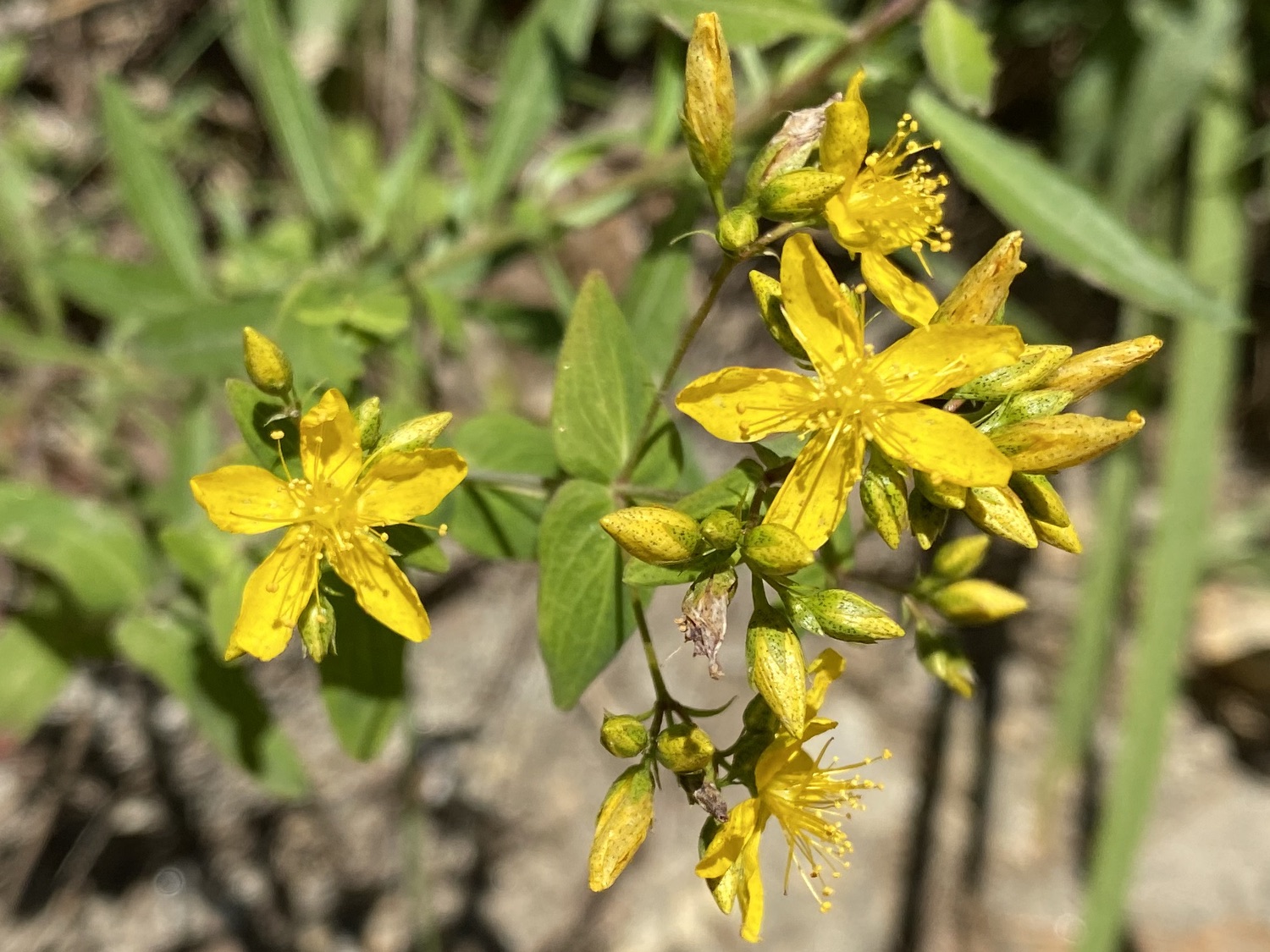
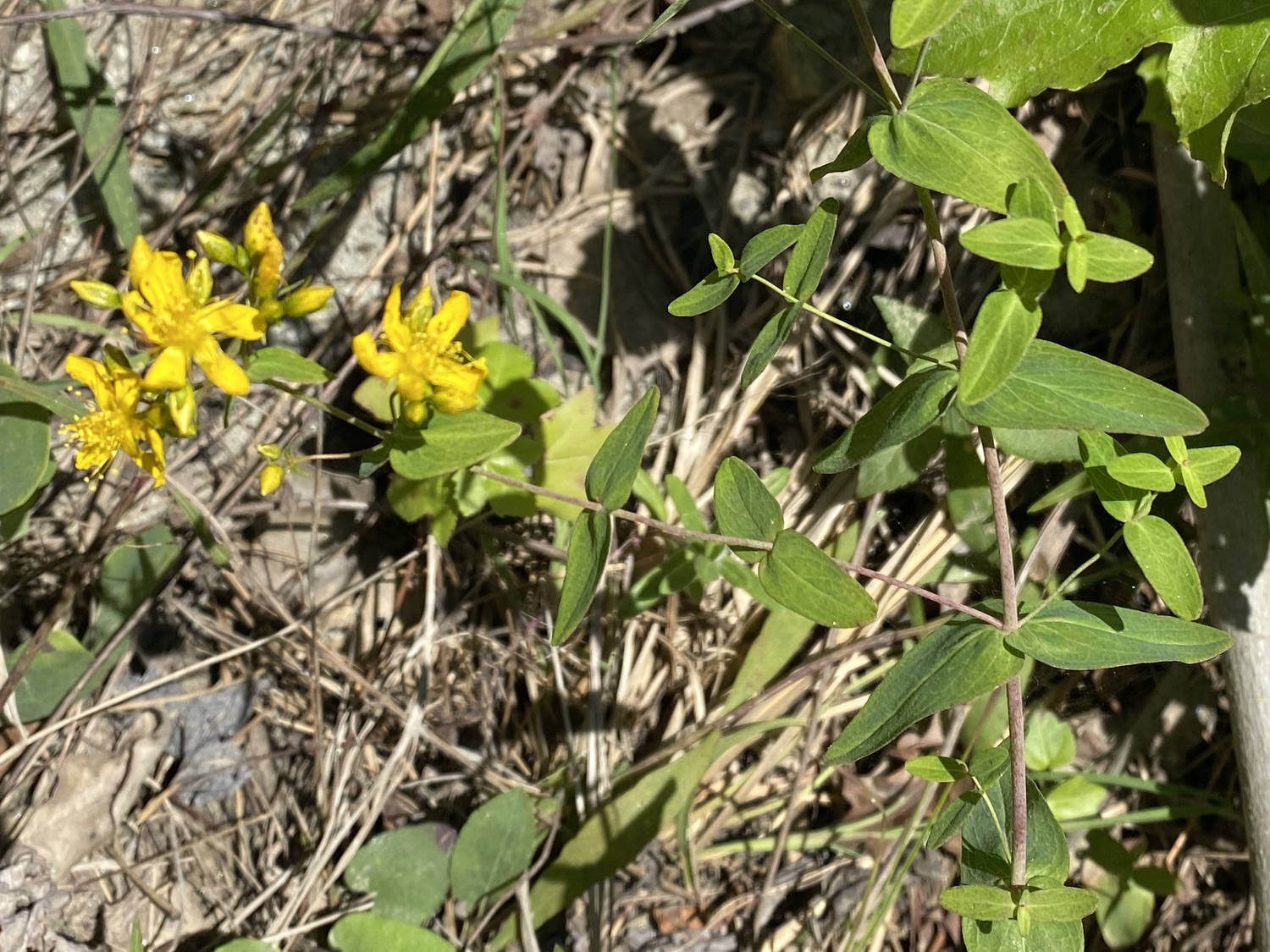
Unknown. Every week seems to have (at least) one that stumps me, and here is this week’s winner. The flowers are clustered and compound, with a few yellow rays and a cluster of yellow flowers in the central disk. The leaves are alternate, and quite narrow, elongated, and pointed. I found only one of these, and it was along the road in a fairly open sunny area.
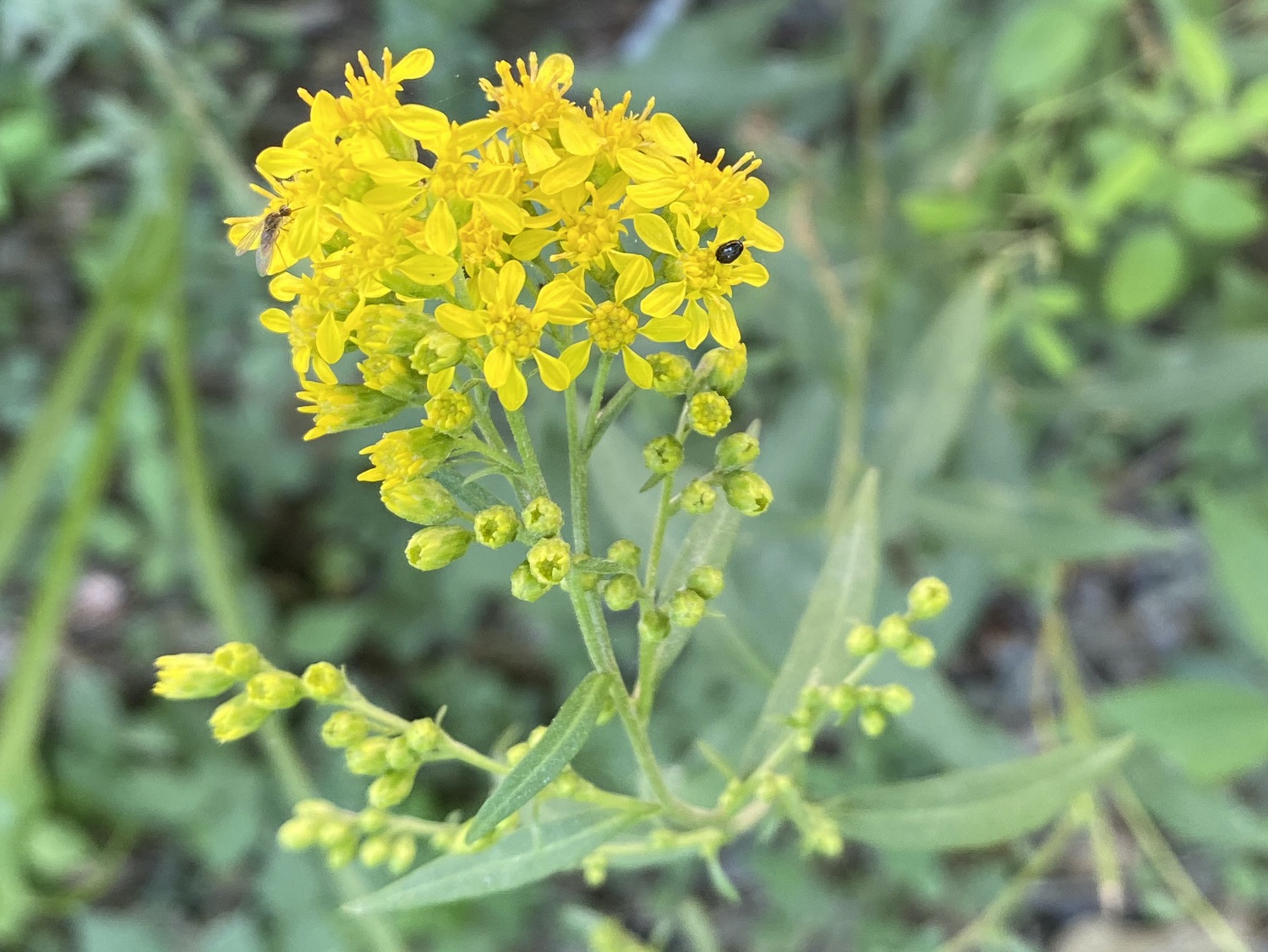
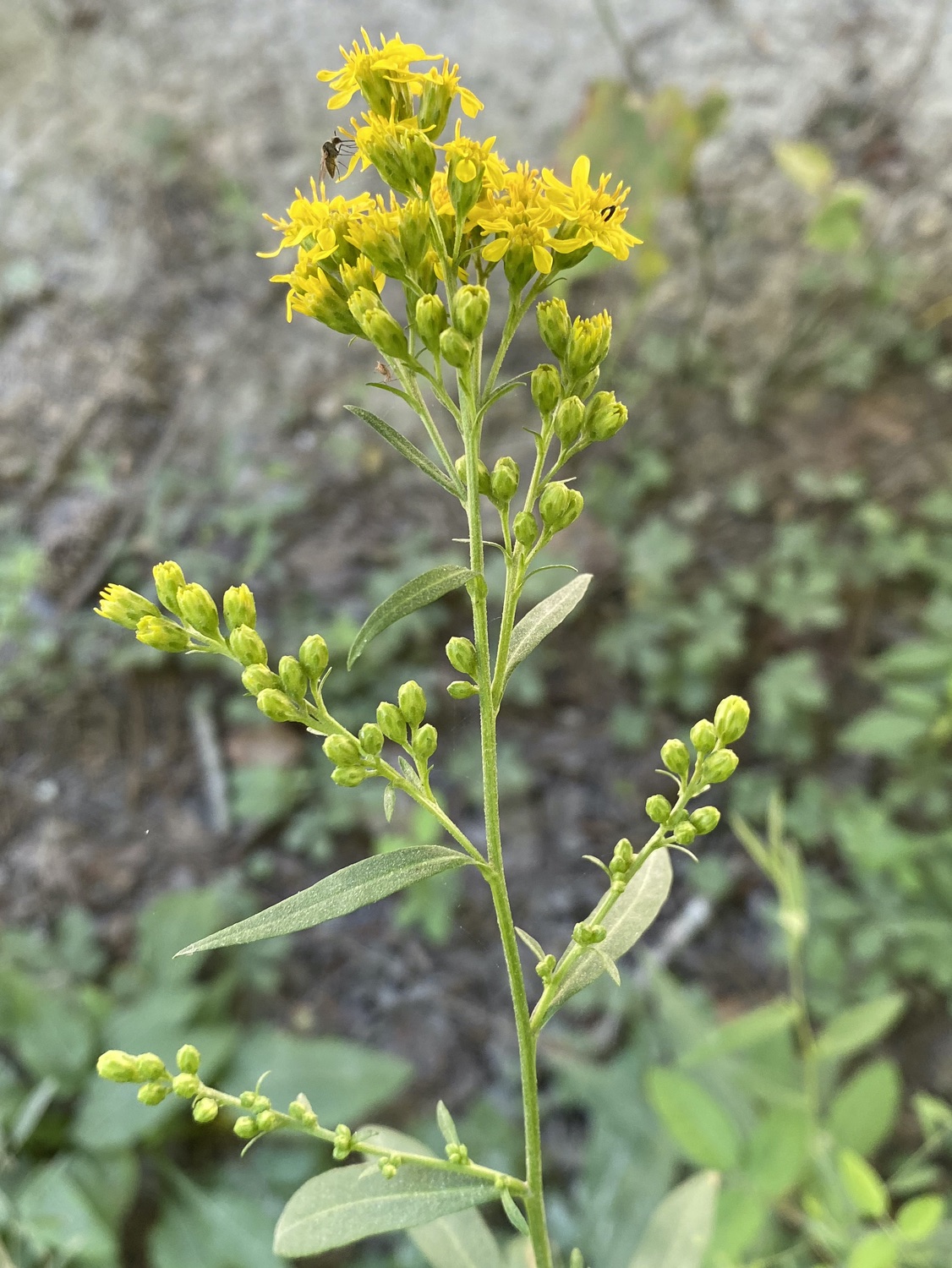
Some other new flowers, plus one that isn’t a flower
Smooth Spiderwort (Tradescantia ohiensis). In addition to the flowers this week were clusters of what looked to be green seed pods with purple stems—or are these yet-unopened flowers?
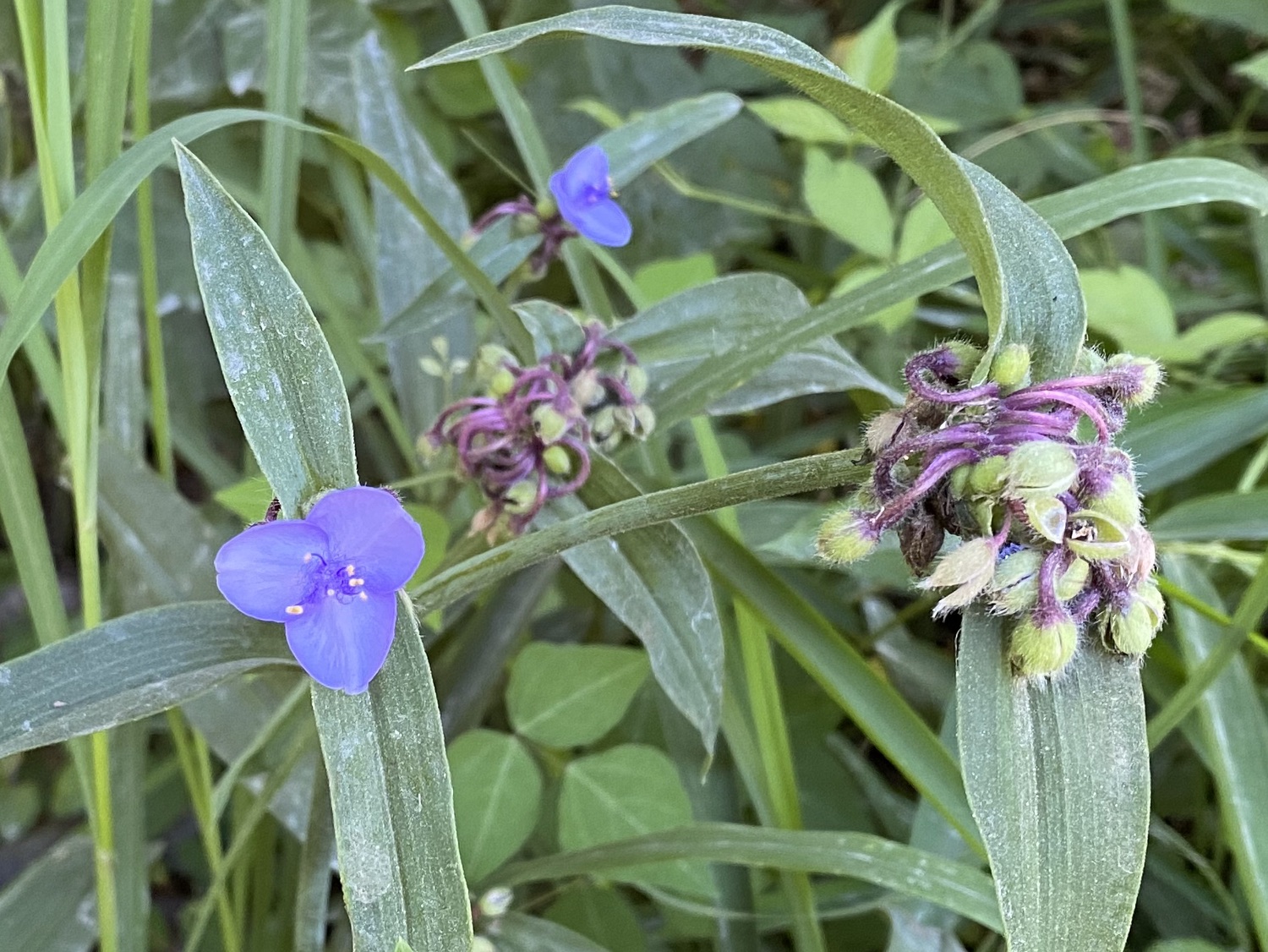
Erect Dayflower (Commelina erecta, also called the Slender Dayflower). These amazing flowers were growing close to the Smooth Spiderwort. The flower has two blue petals, a single descending white petal, several long and curly white anthers, some tipped with yellow and some not. The leaves are long and tapering.
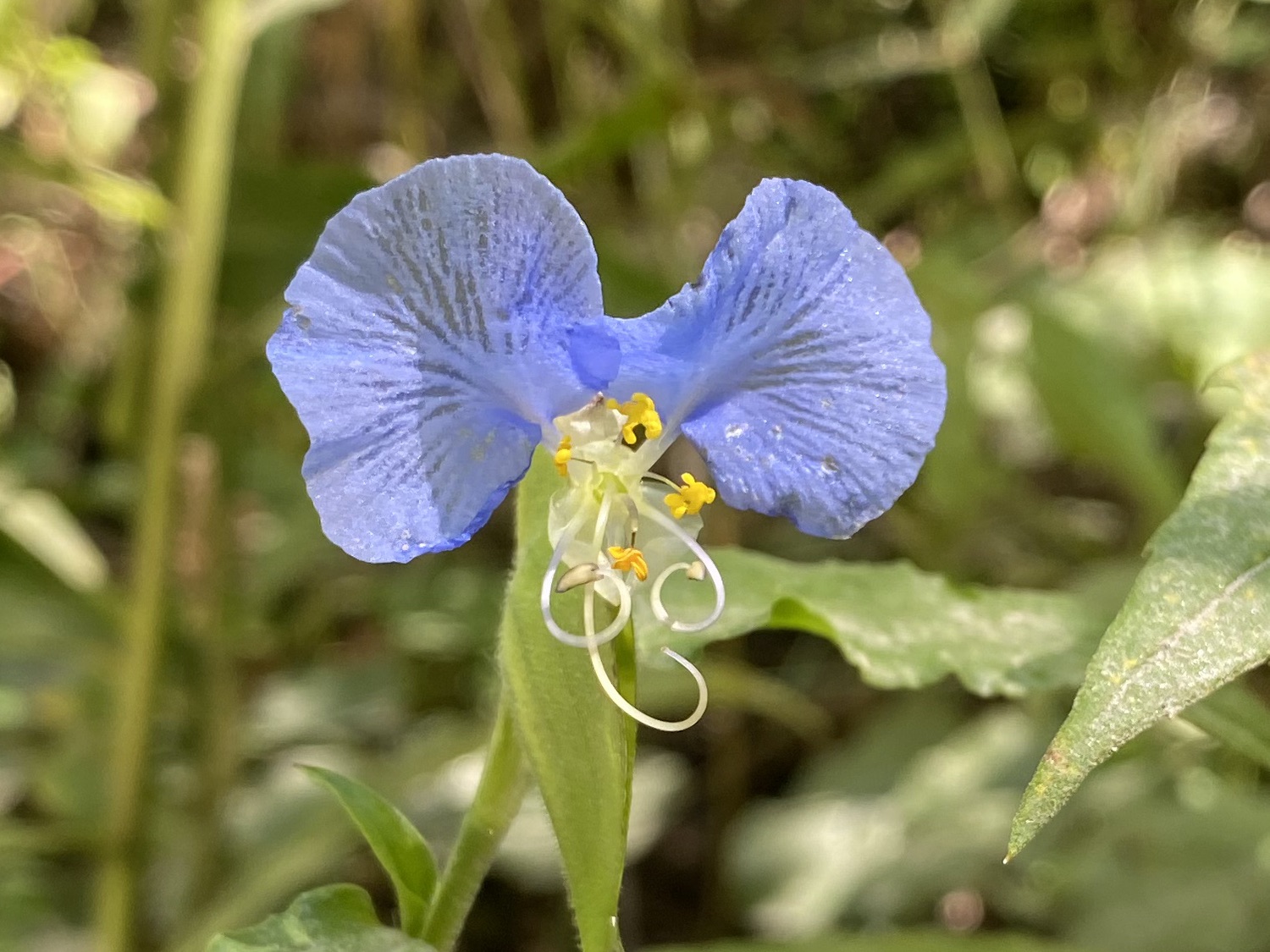
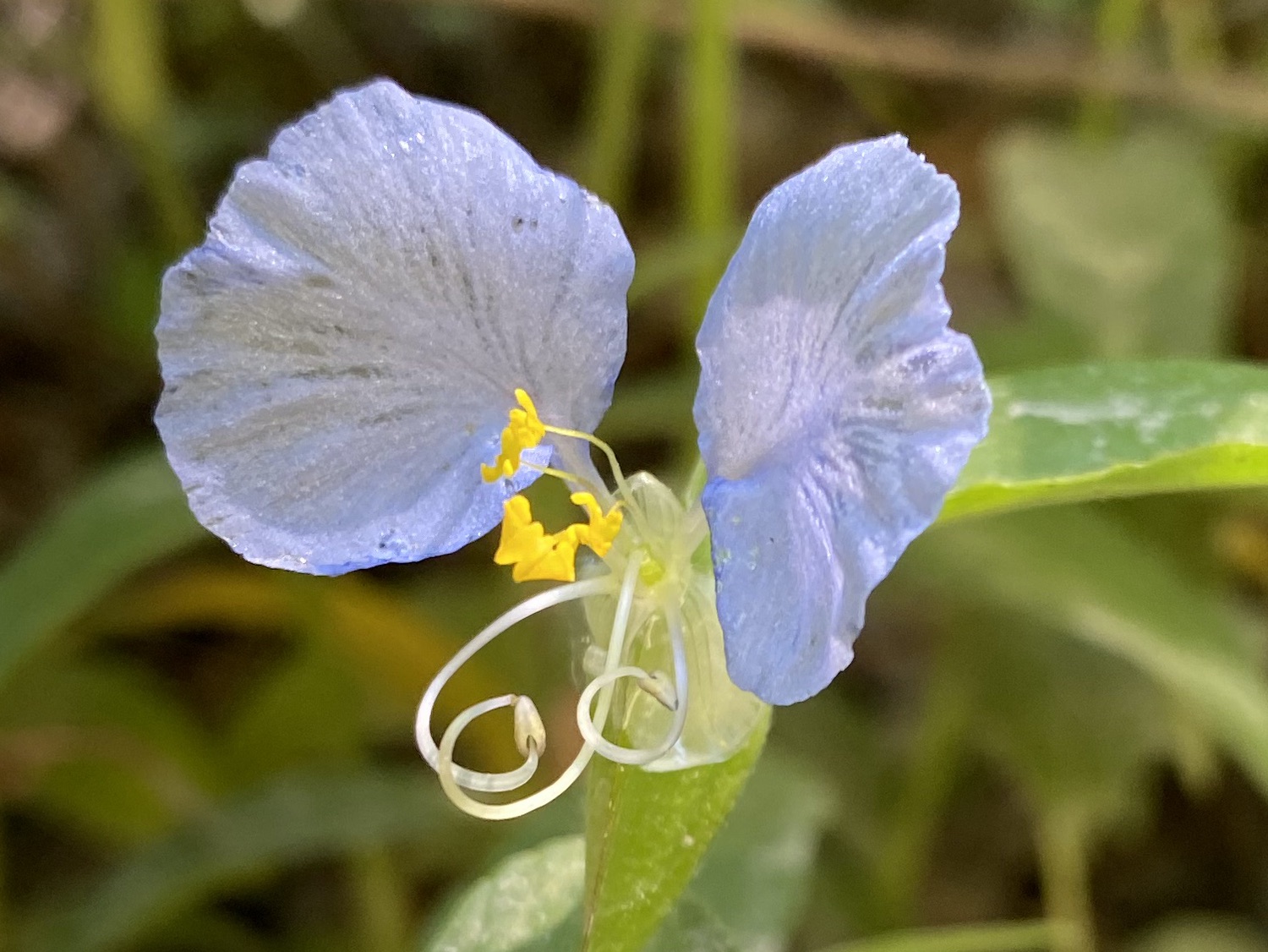
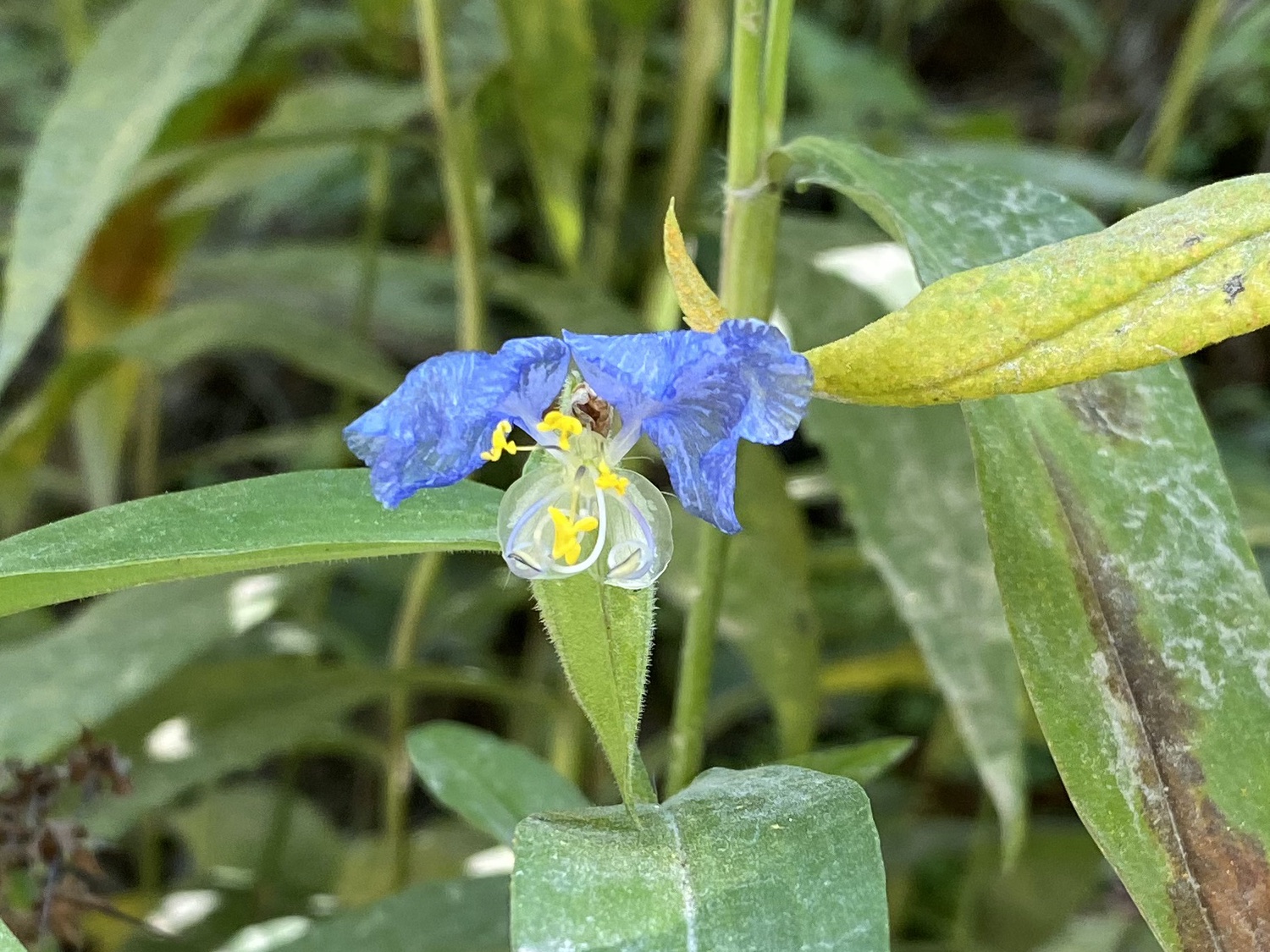
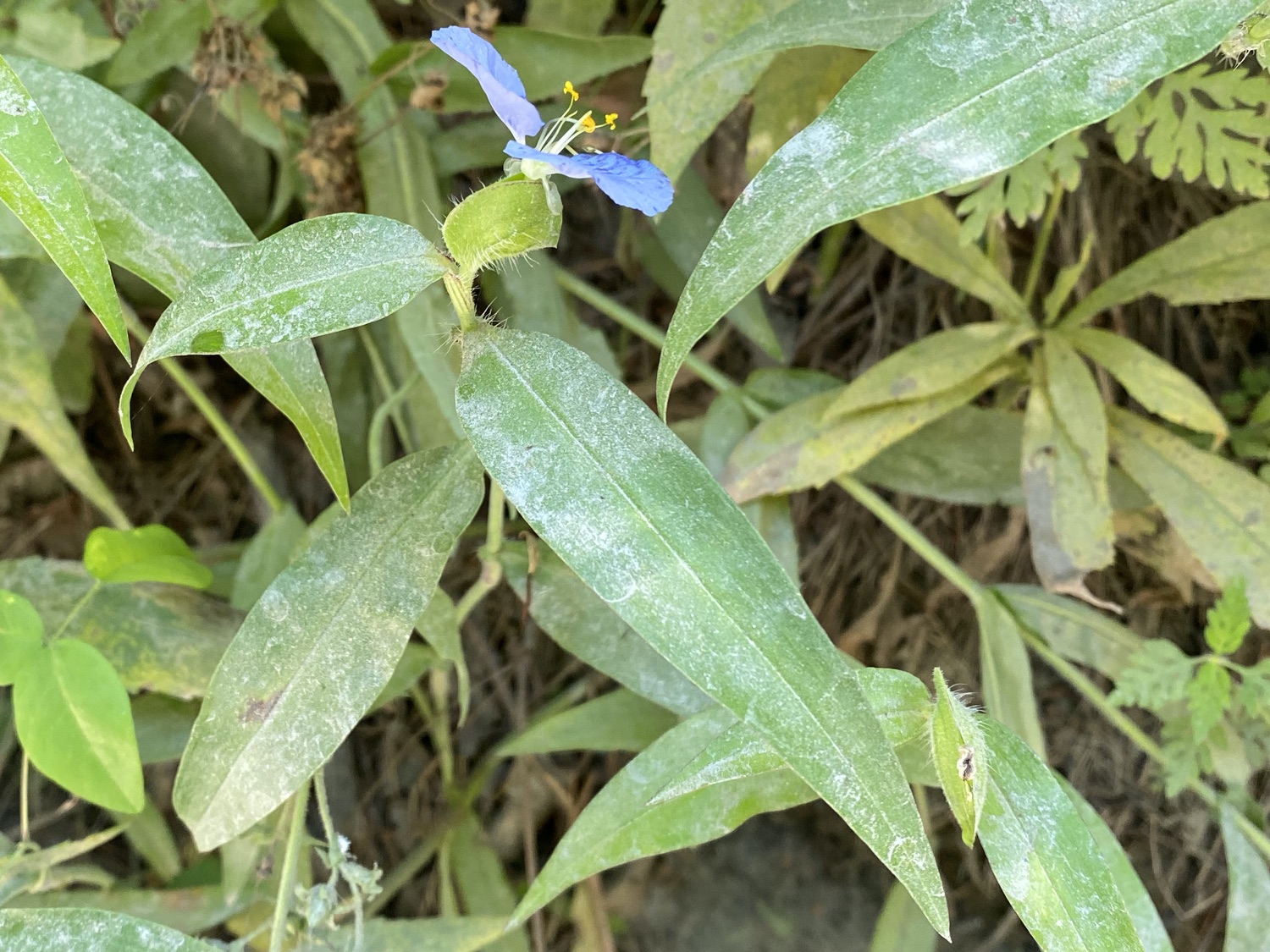
Self-Heal (Prunella vulgaris). I found these a few weeks ago (22 May) at Scull Shoals, but this is the first I’ve seen them at Currahee. They are along the roadside in the clear-cut area near the trailhead.
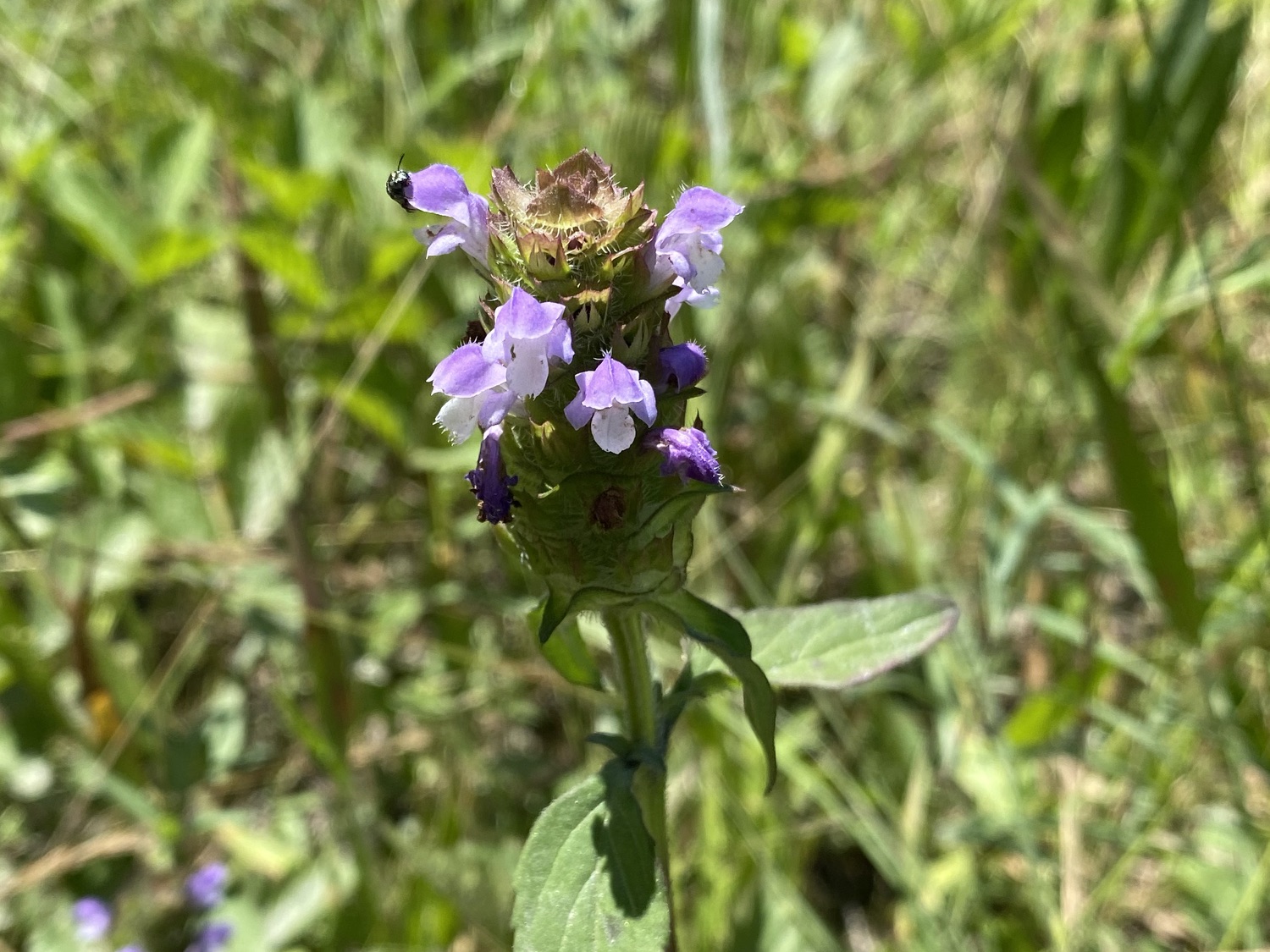
Northern Leatherflower (Clematis viorna). When the Northern Leatherflower goes to seed, it makes these amazing starbursts.
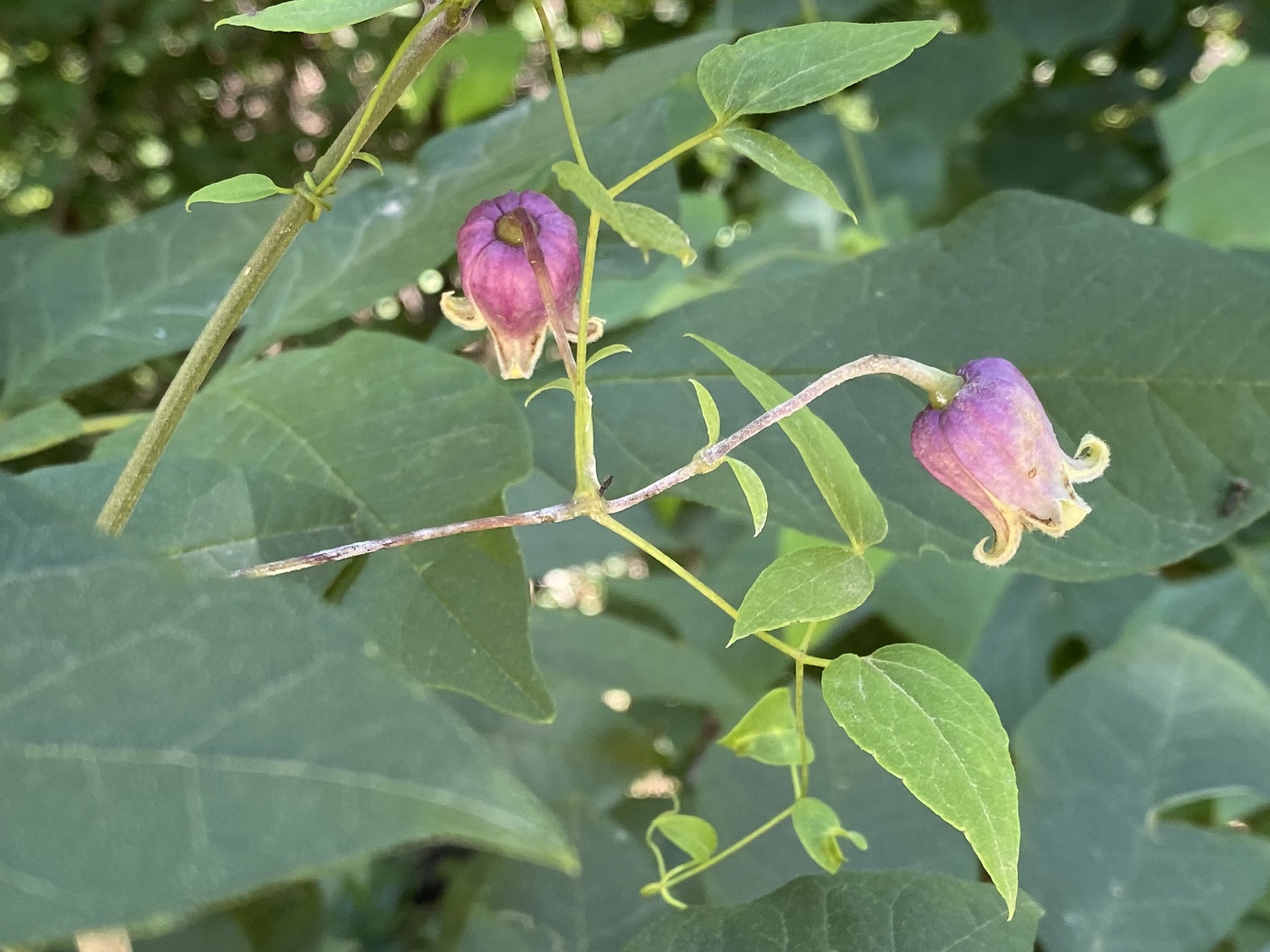
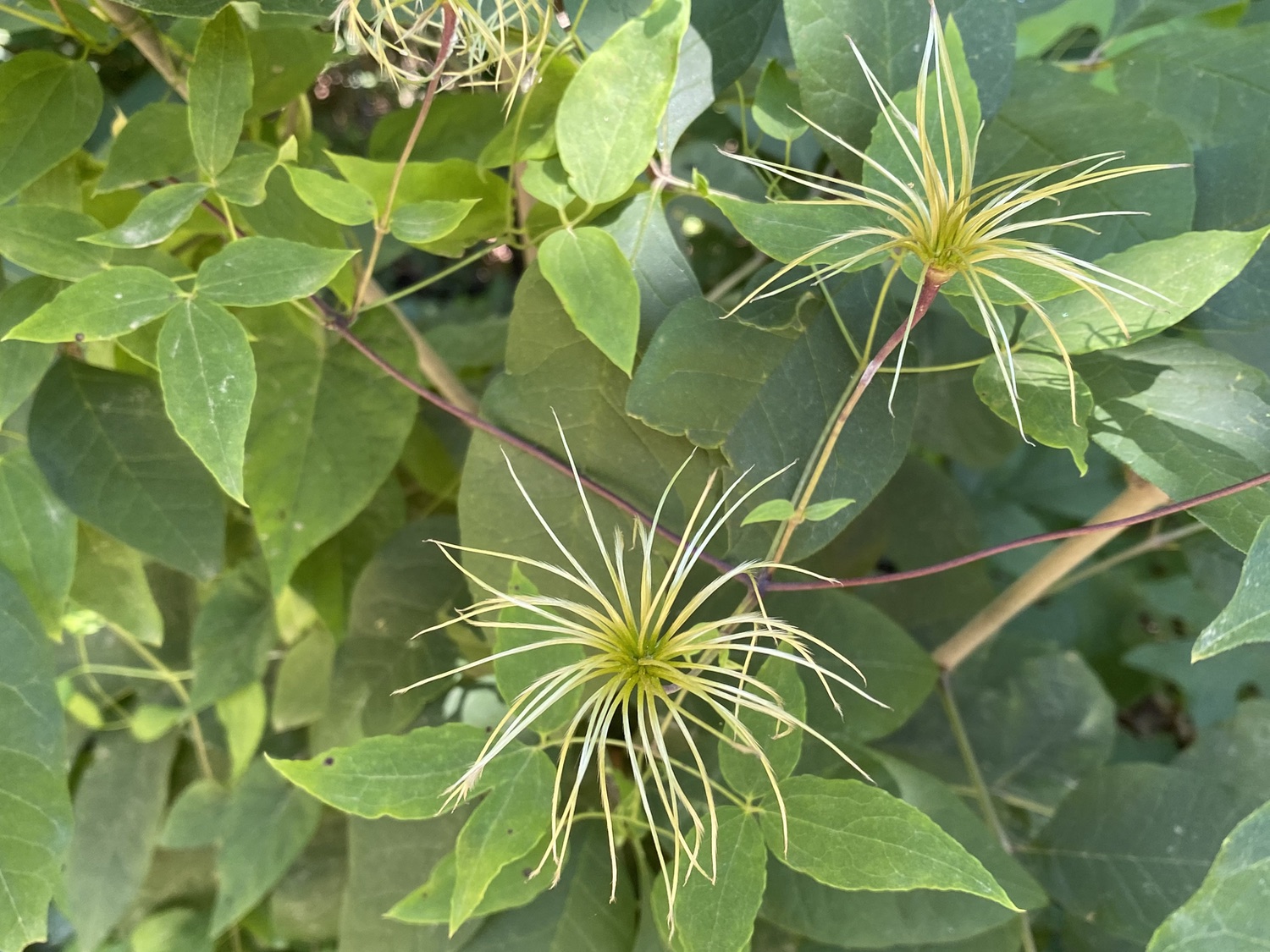
Wild Hydrangea (Hydrangea arborescens). I had trouble identifying these two weeks ago, but the flowers are further along this week, and I have more photos to work with. The flower heads start off with a main mass of what look like white buds, each divided into five. Around the edge are small white flowers with three or four simple petals; these are apparently sterile. On some plants, the white buds have opened, each making ten white stamens, making it look like fireworks going off. The leaves are large, opposite, and toothed, with a long tip.
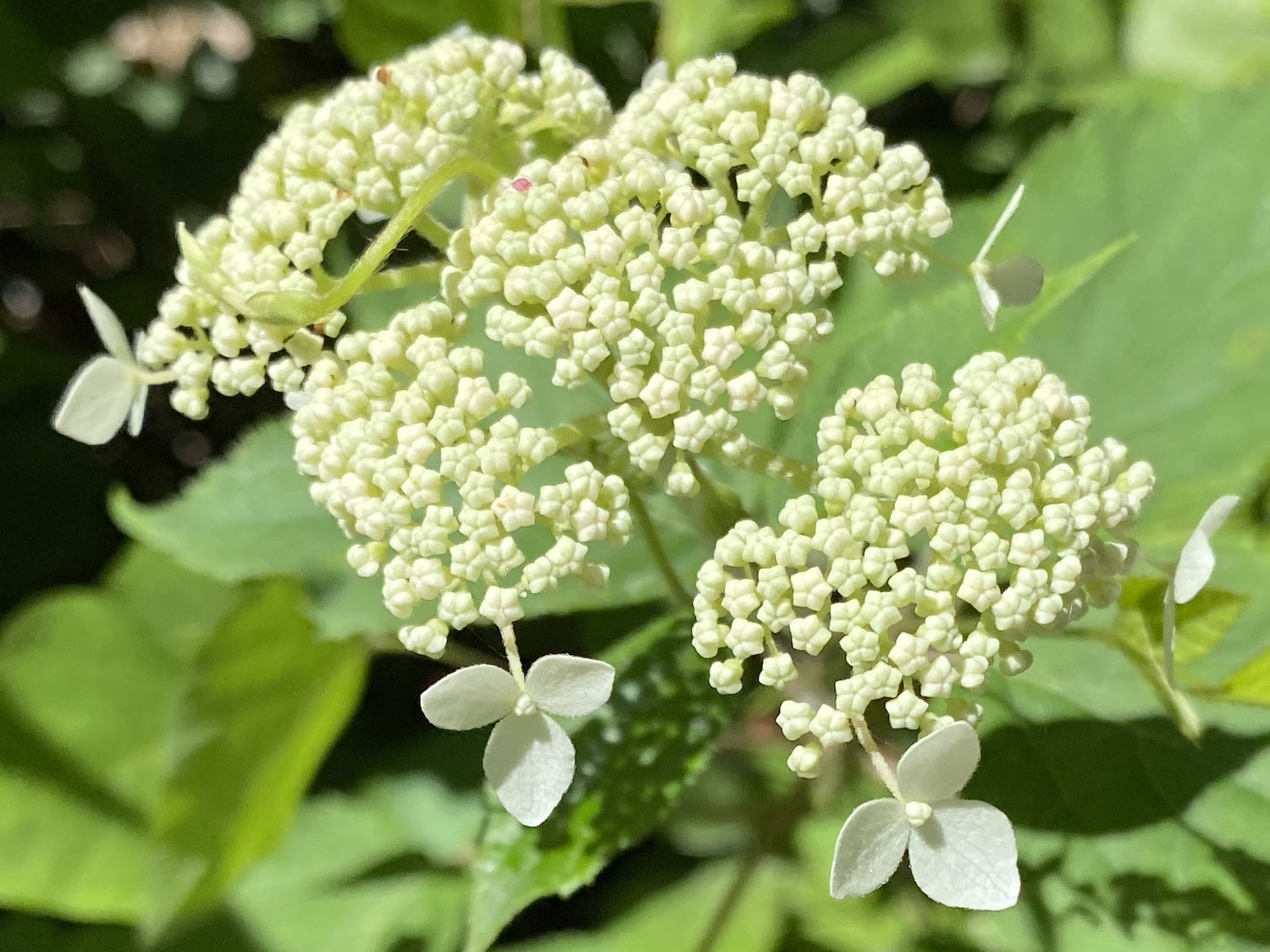
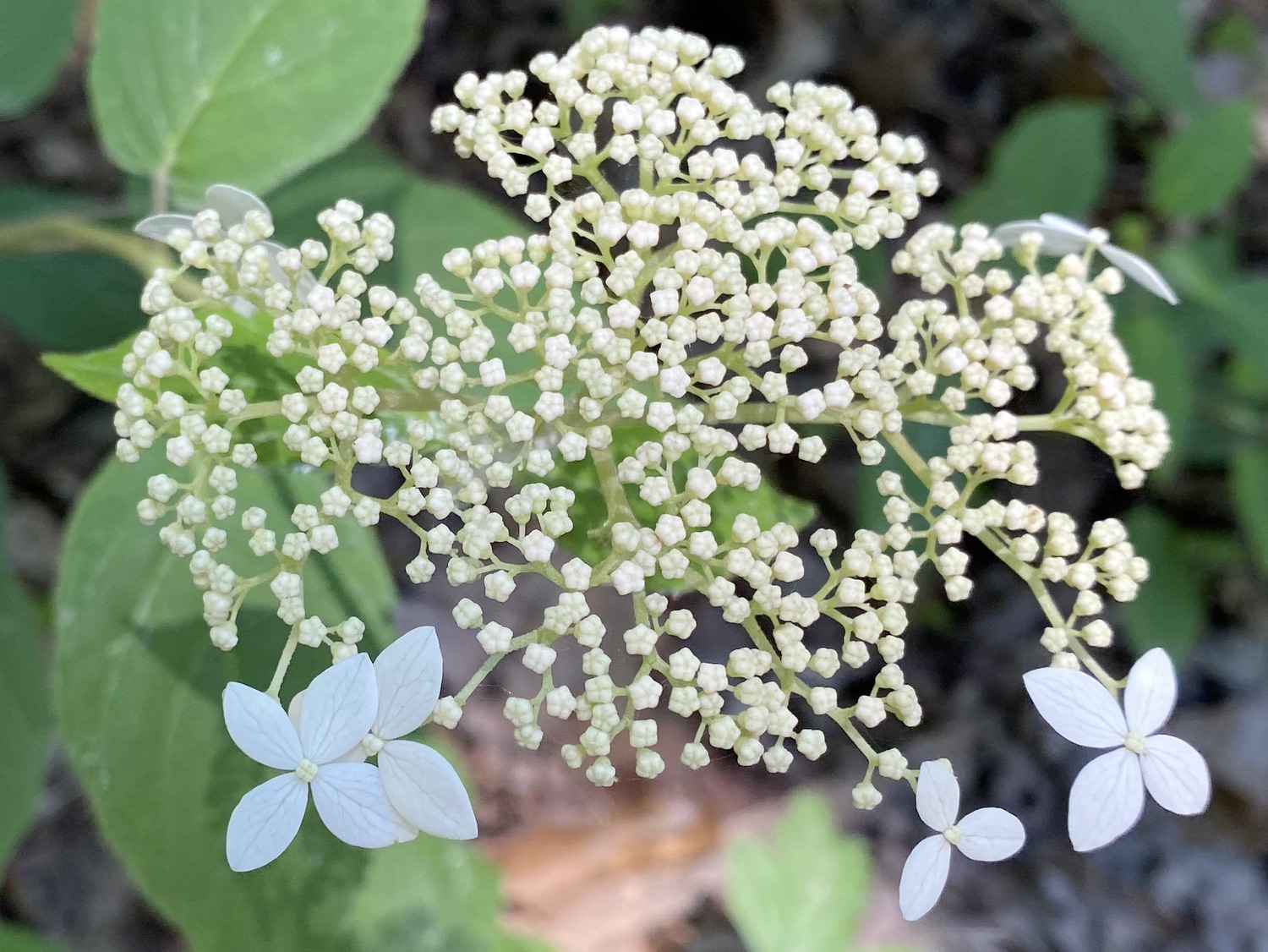
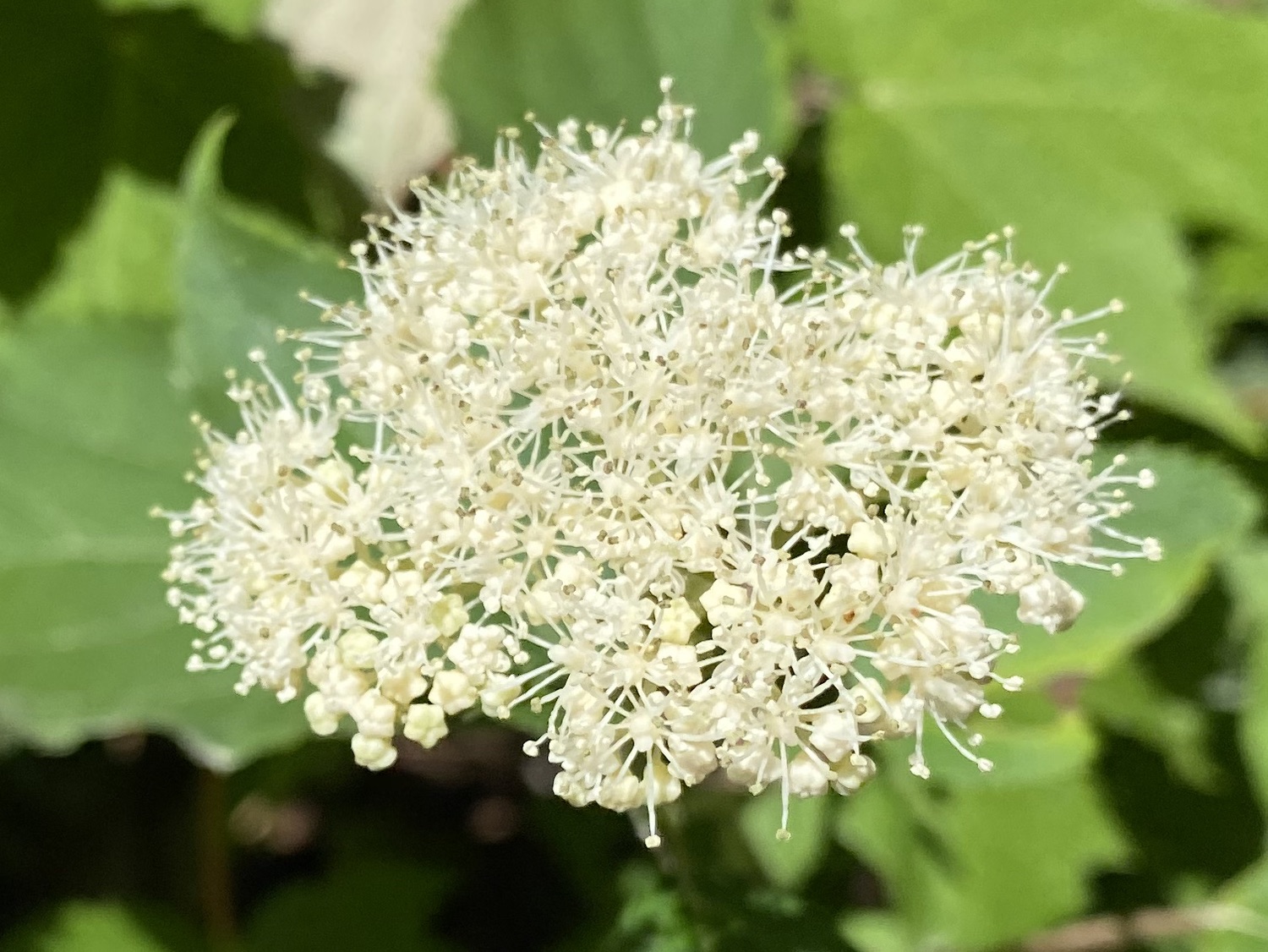
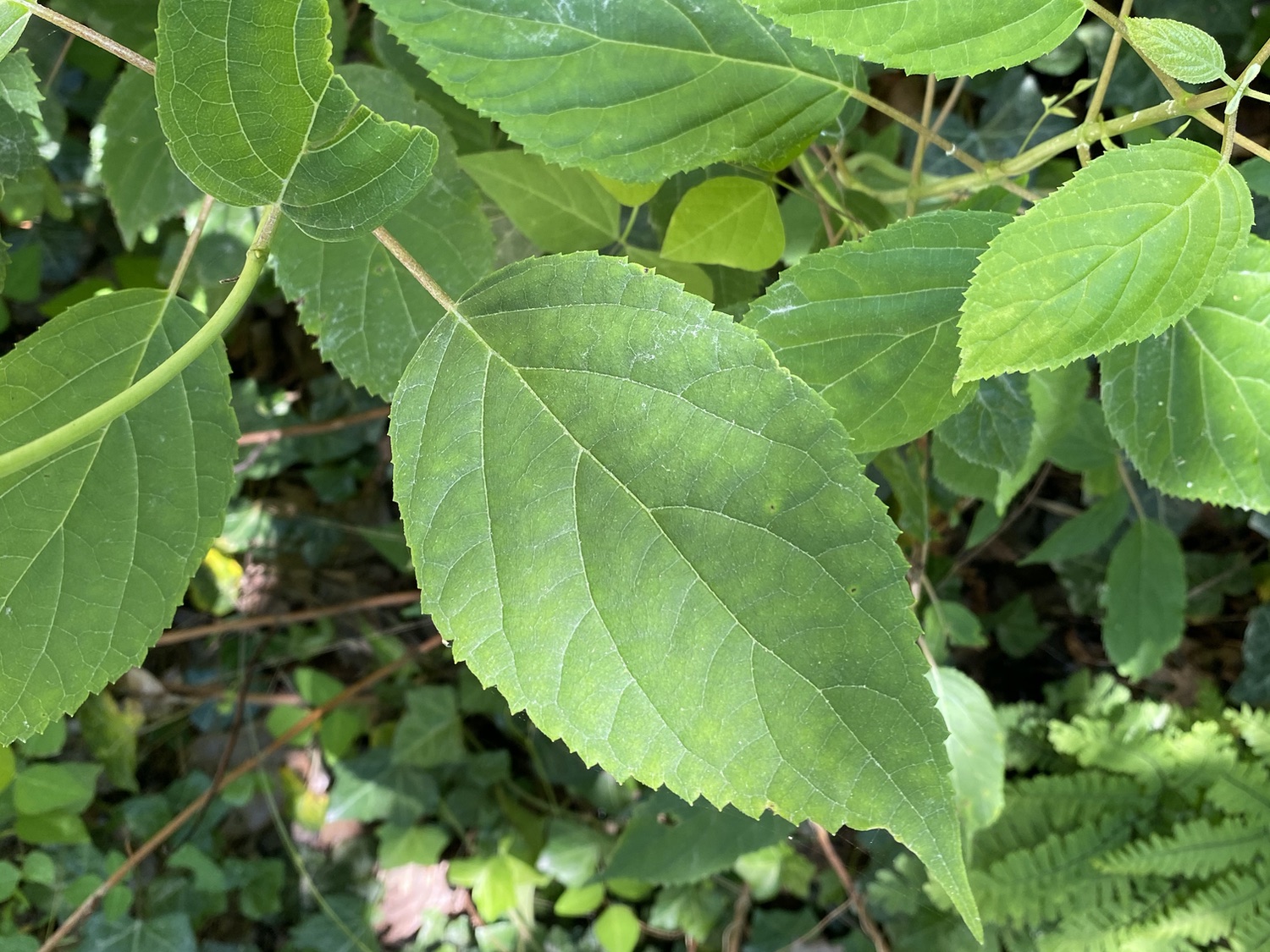
Narrow-Leaf White-Topped Aster (Seriocarpus linifolius; Aster solidagineus is a synonym). These flowers are compound with several long and narrow white rays and pinkish white flowers in the central disk. The leaves are long and narrow, and they are hairy and alternate.
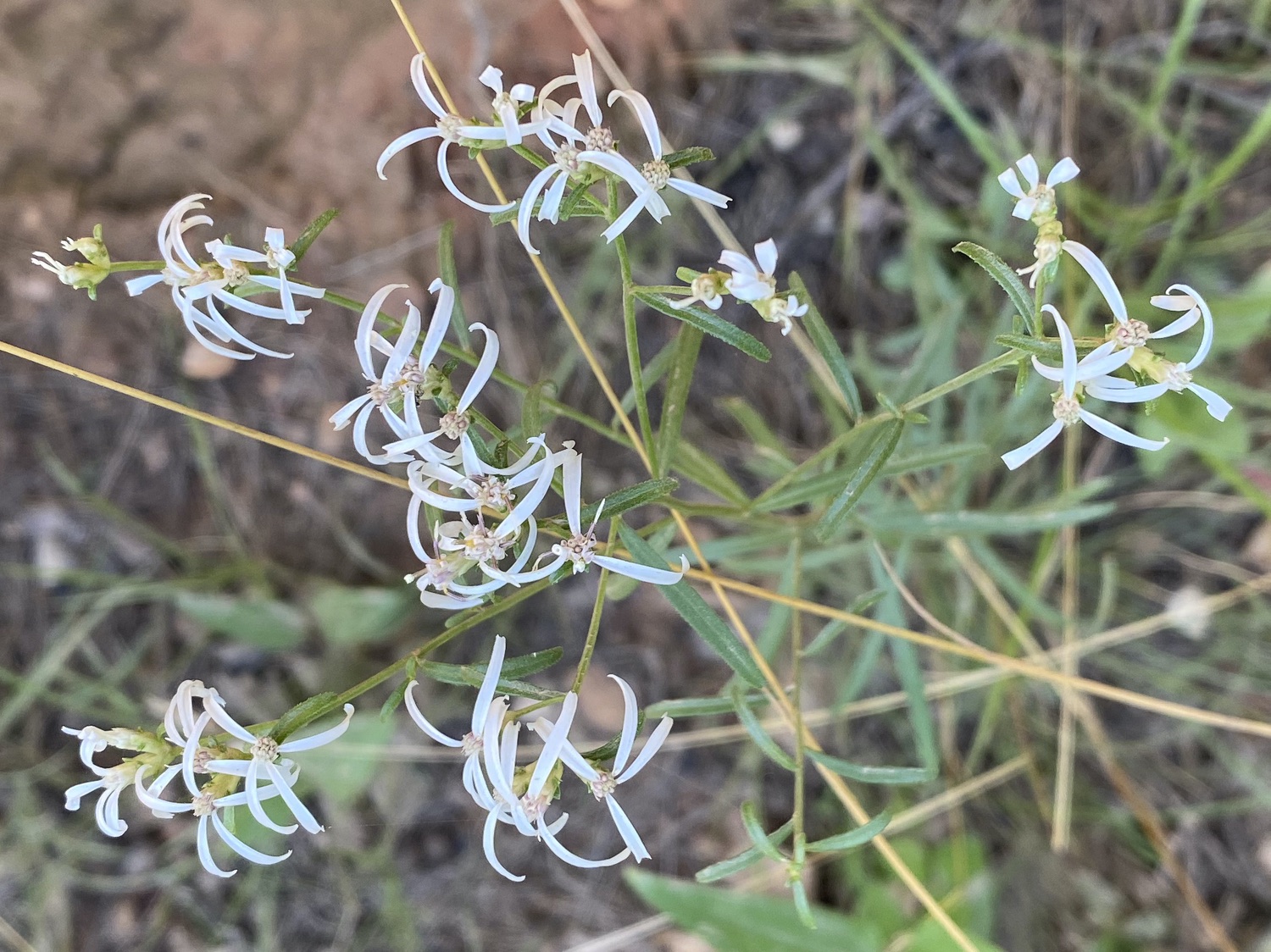
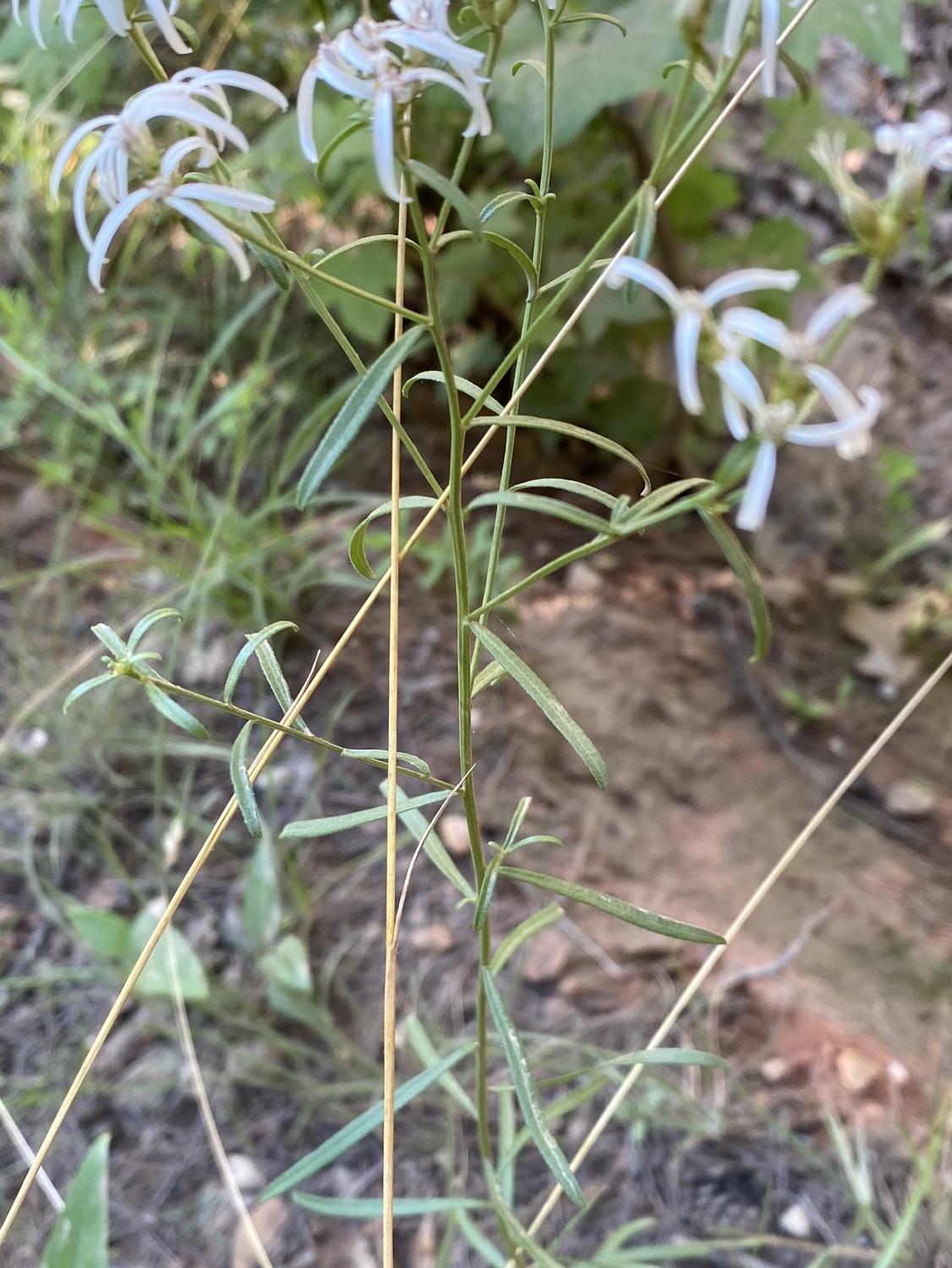
Morning Glory (Ipomoea purpurea). Two weeks ago, all of these were entirely white, but this week, they have purple centers, which makes them look similar to Ipomoea pandurata, the Wild Sweet Potato. The leaves are heart-shaped and narrow, and they are much smaller than those of the Wild Sweet Potato.
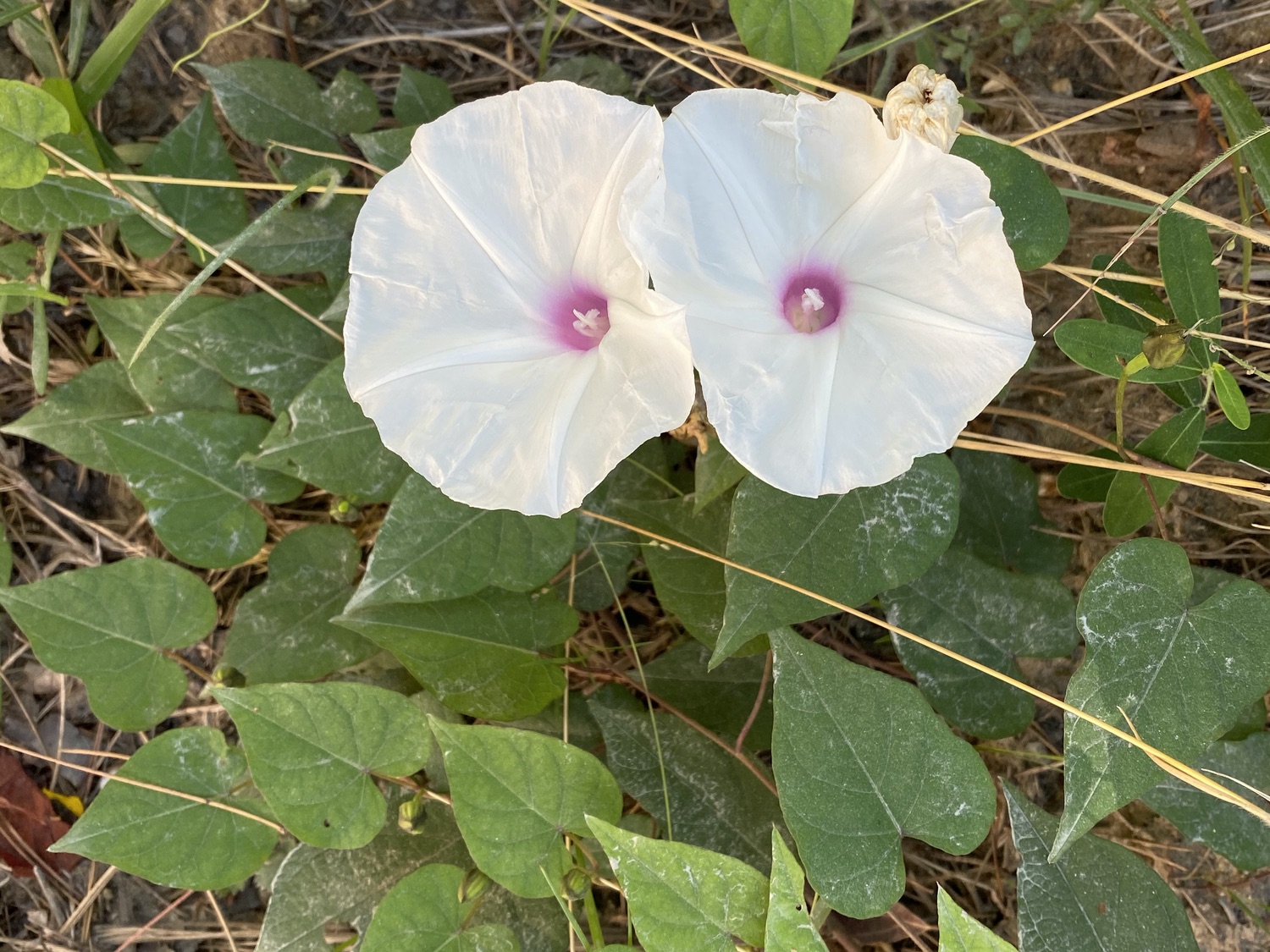
Smooth Sumac (Rhus glabra). Looking out from the top of Currahee, I thought I saw some red-maroon flowers, but they turned out to be the berries of Smooth Sumac. These can apparently be used to make drinks and have a lemony flavor. Don’t take my word for it.
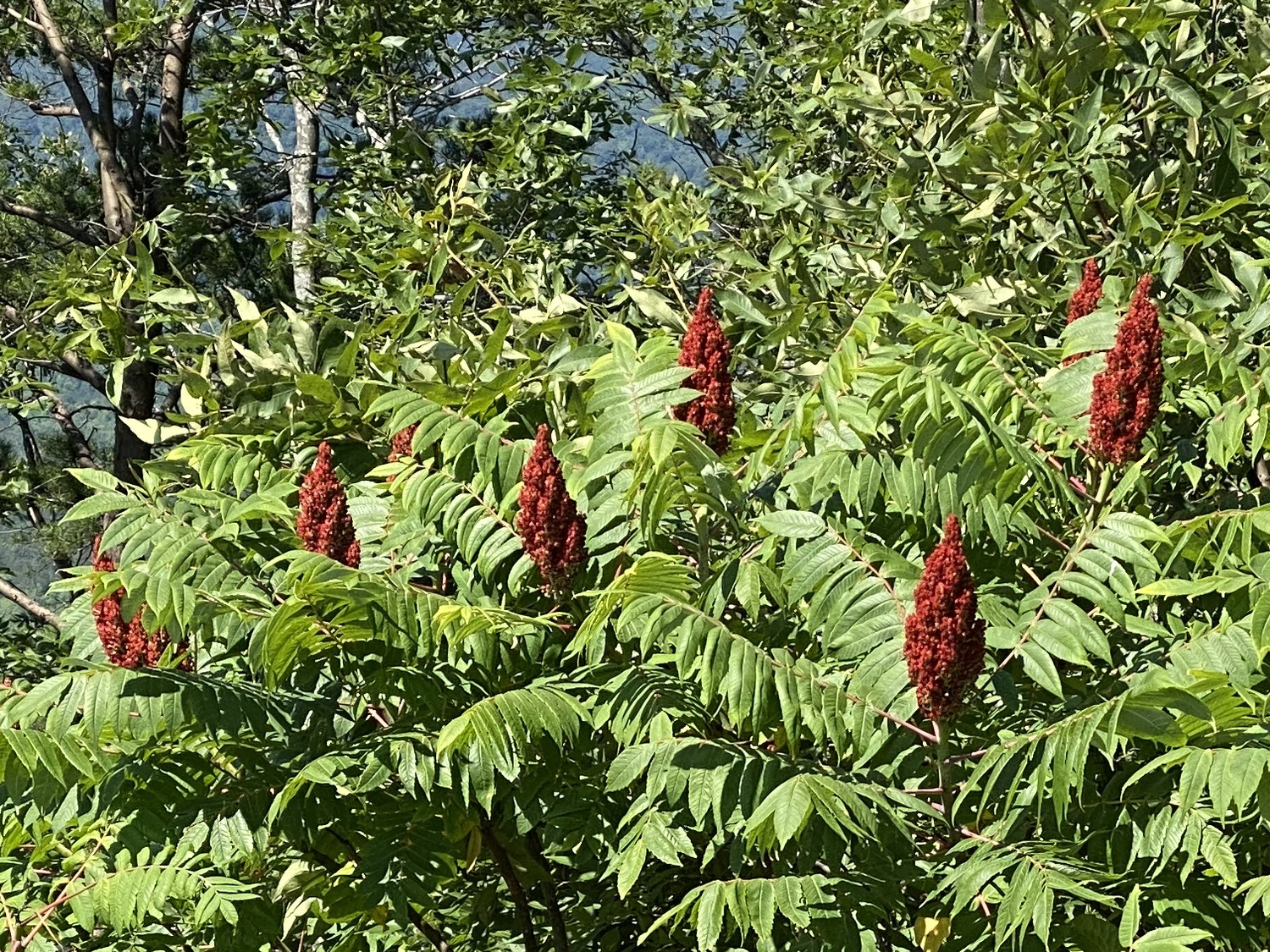
References
Chafin, L.G. 2016. Field Guide to the Wildflowers of Georgia and Surrounding States. The University of Georgia Press, Athens, Georgia.
Duncan, W.H., and M.B. Duncan. 1999. Wildflowers of the Eastern United States. The University of Georgia Press, Athens, Georgia.